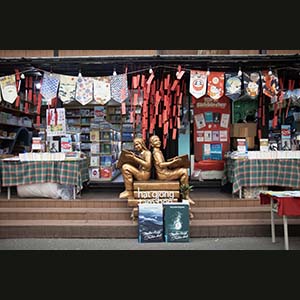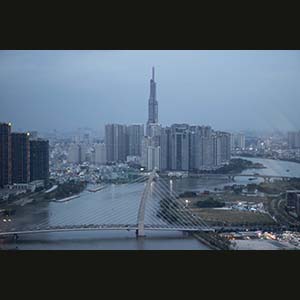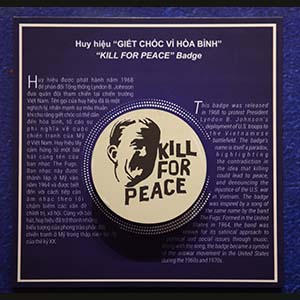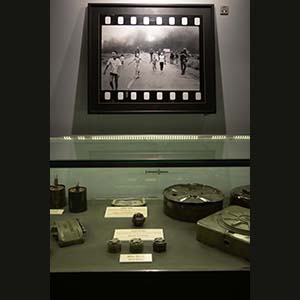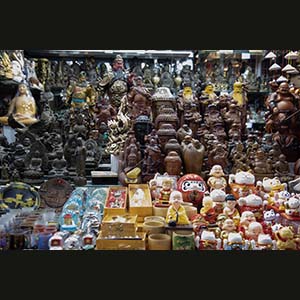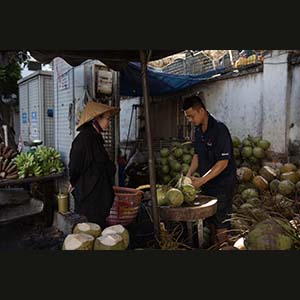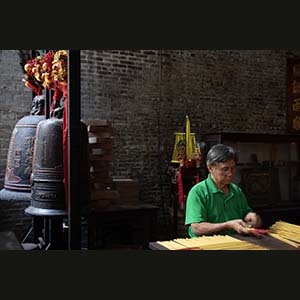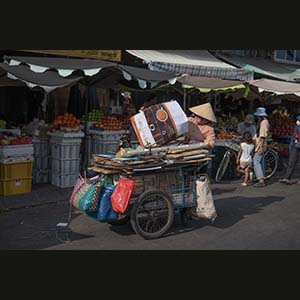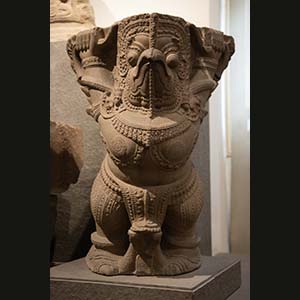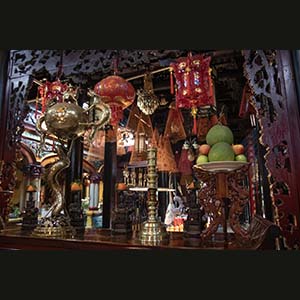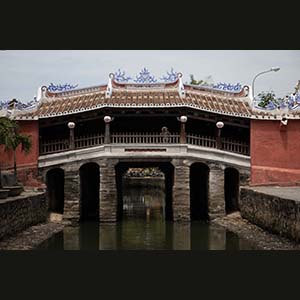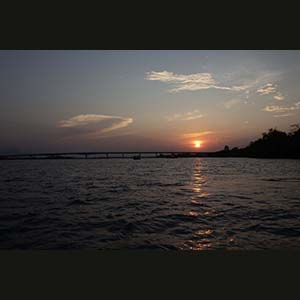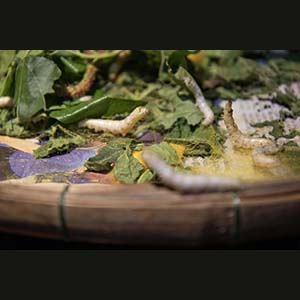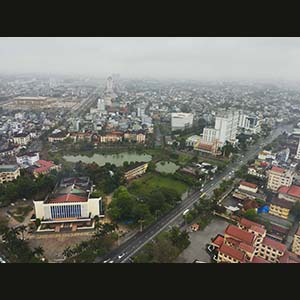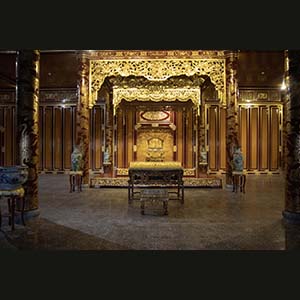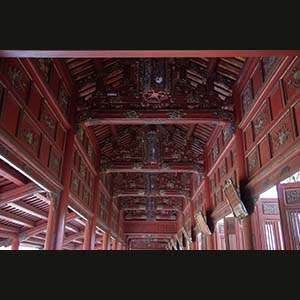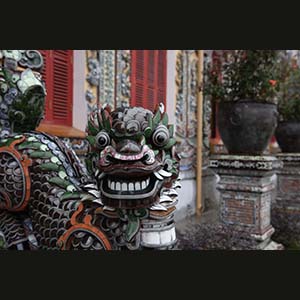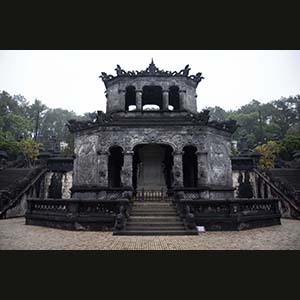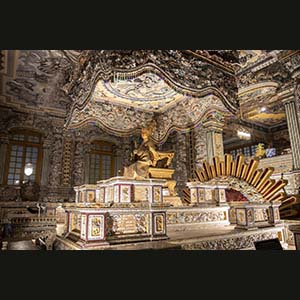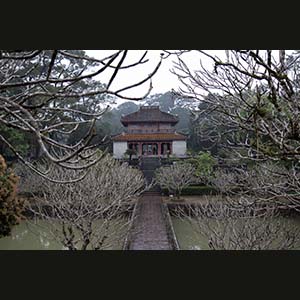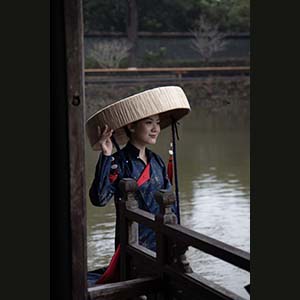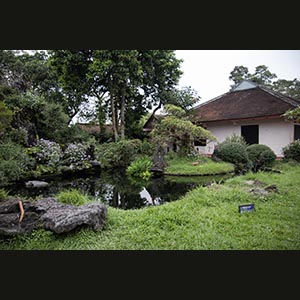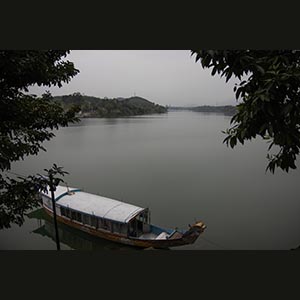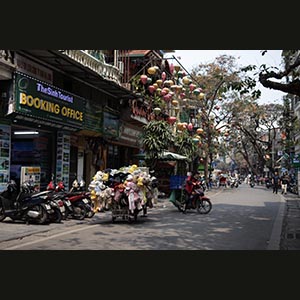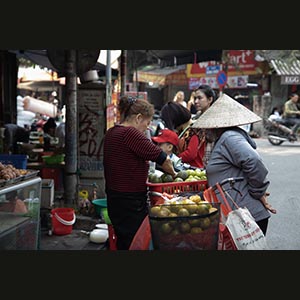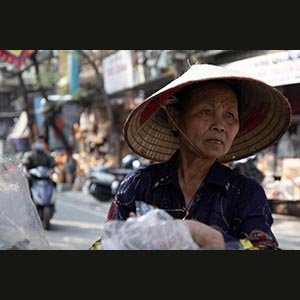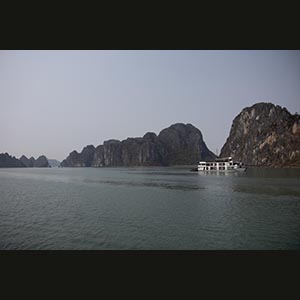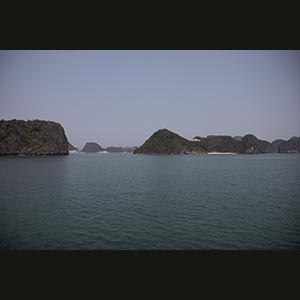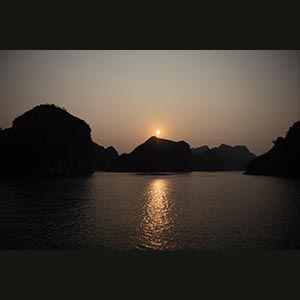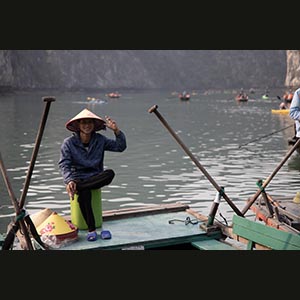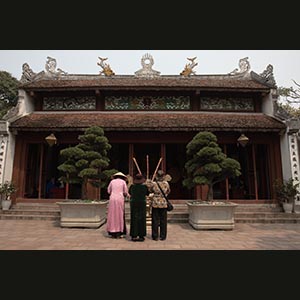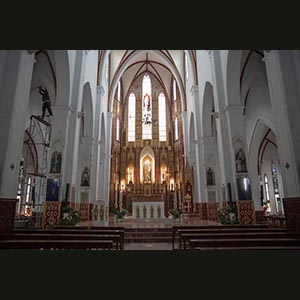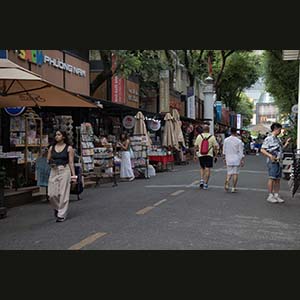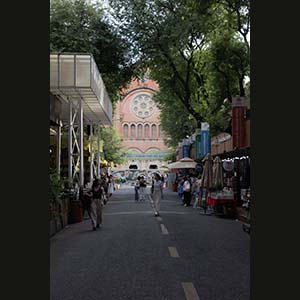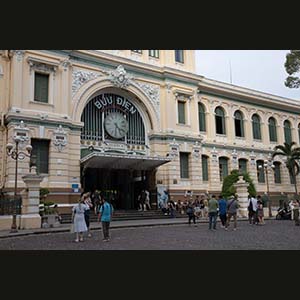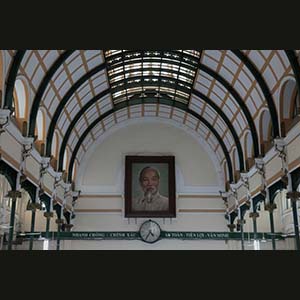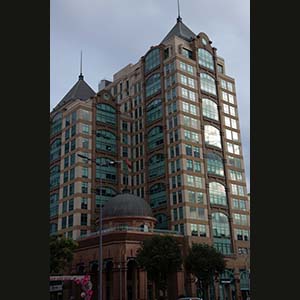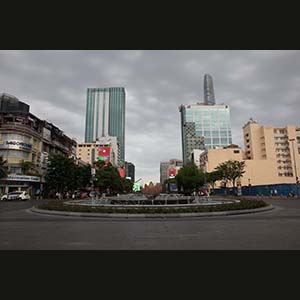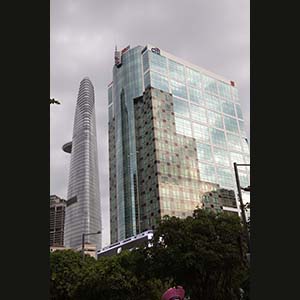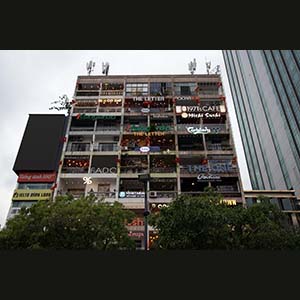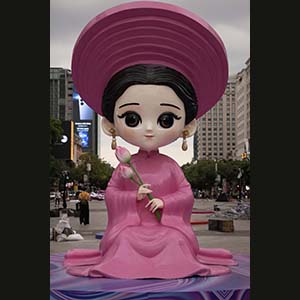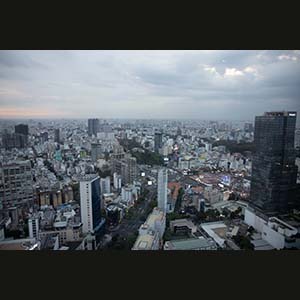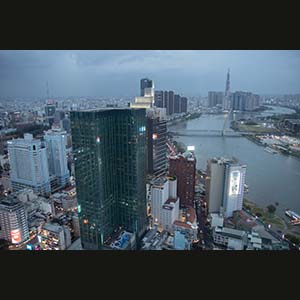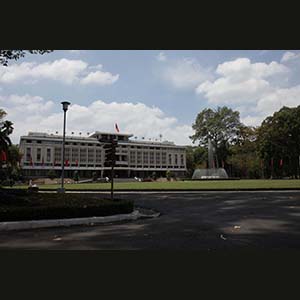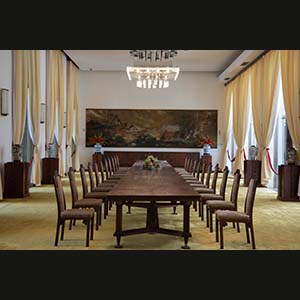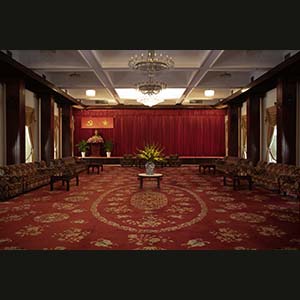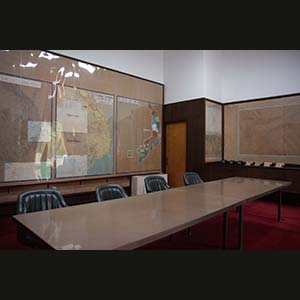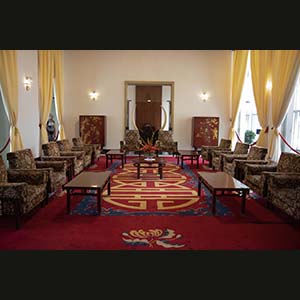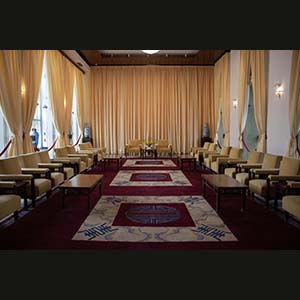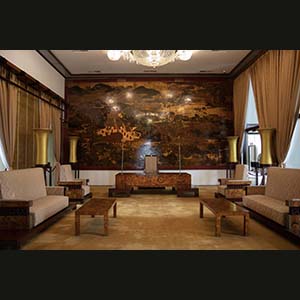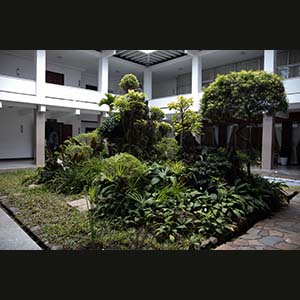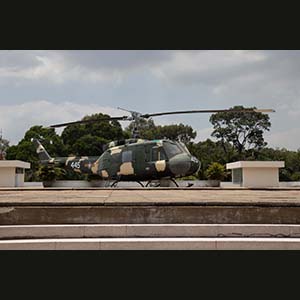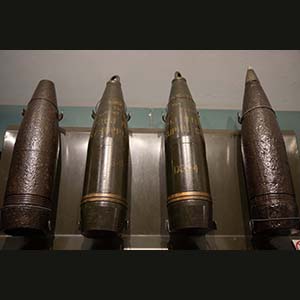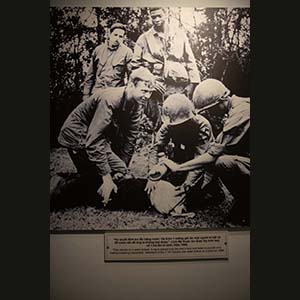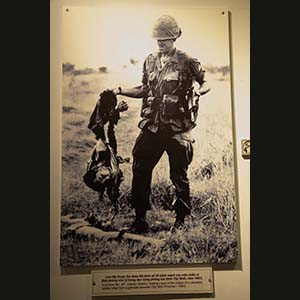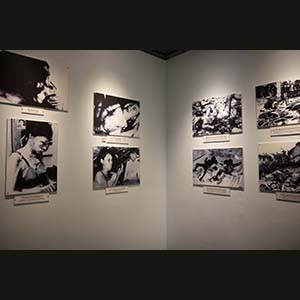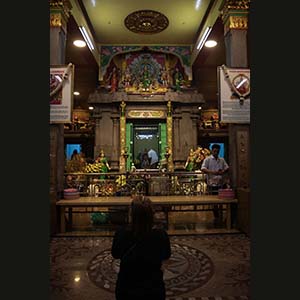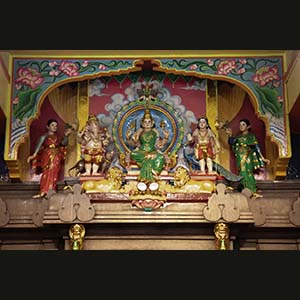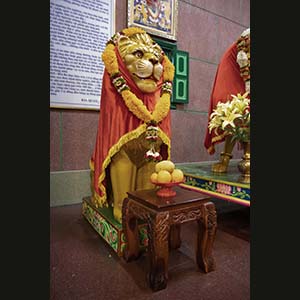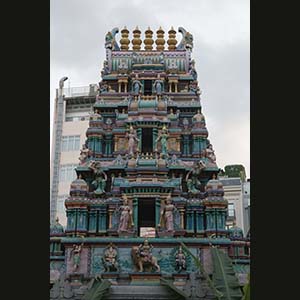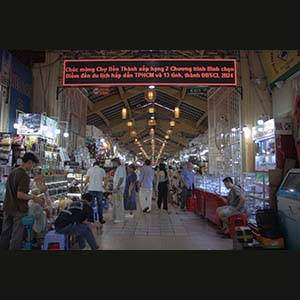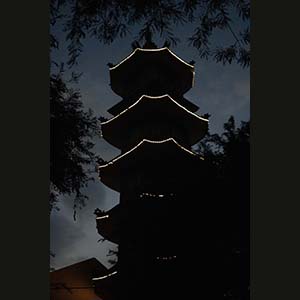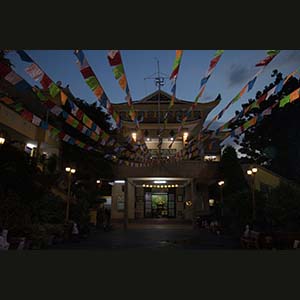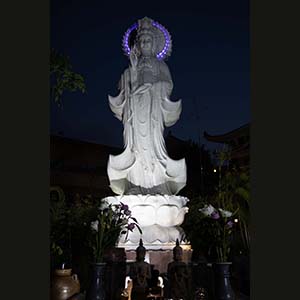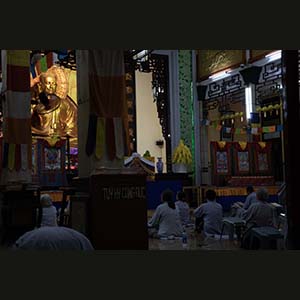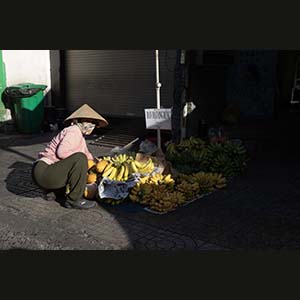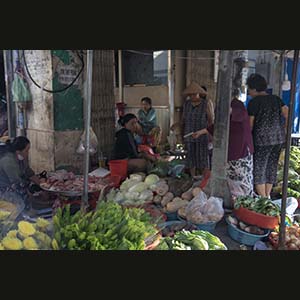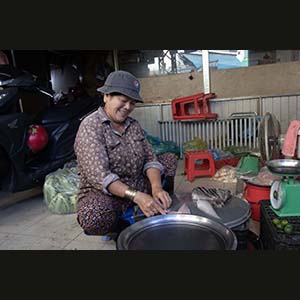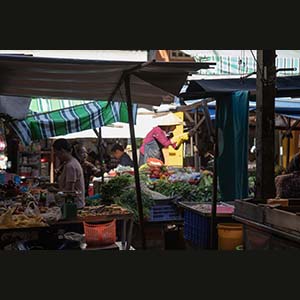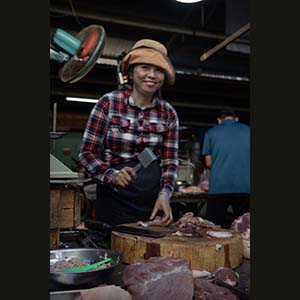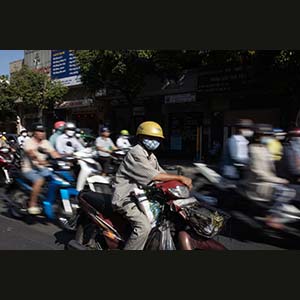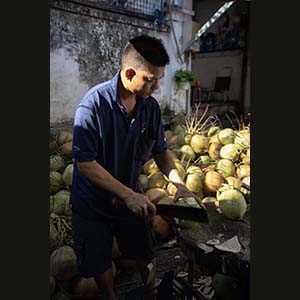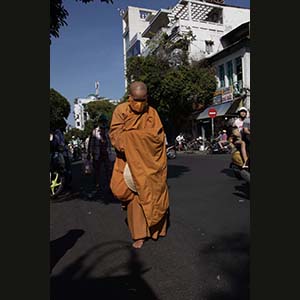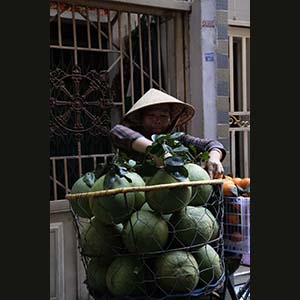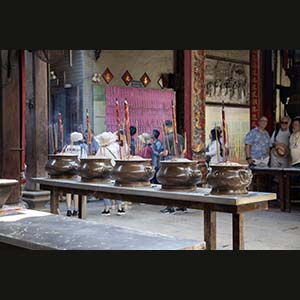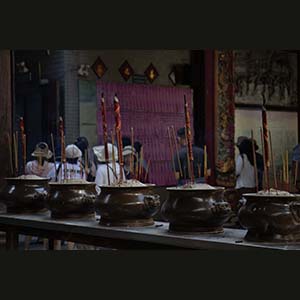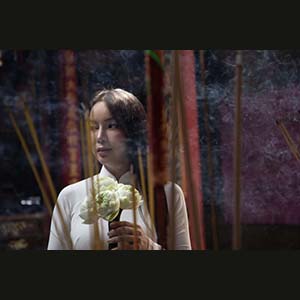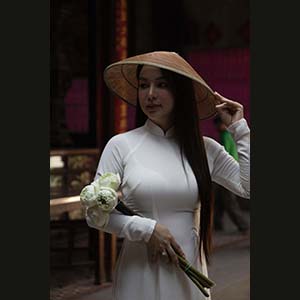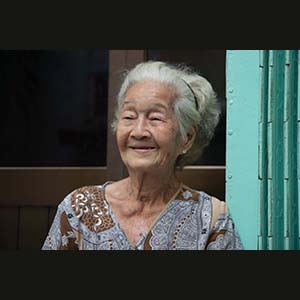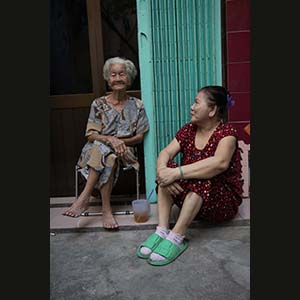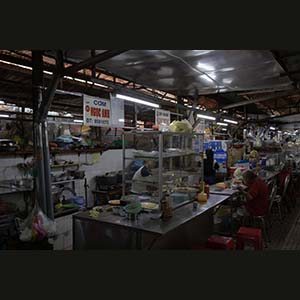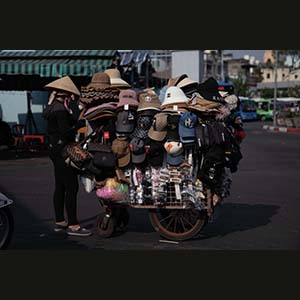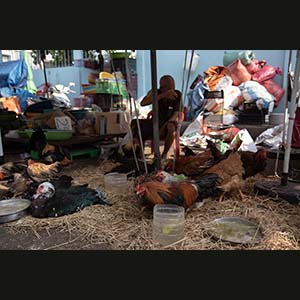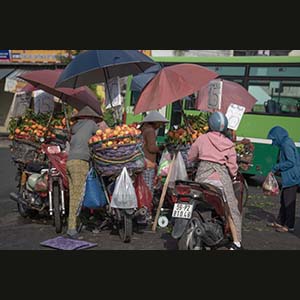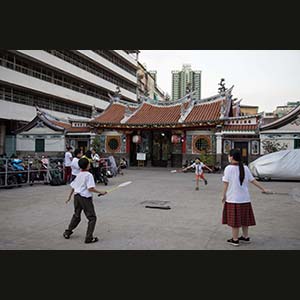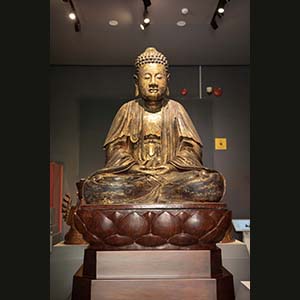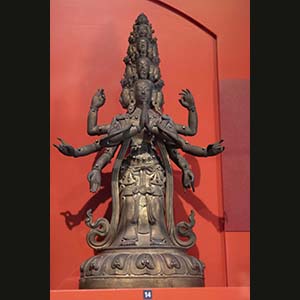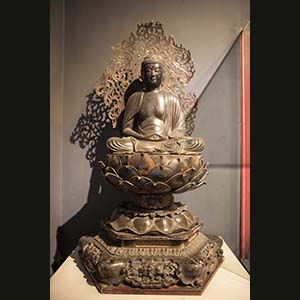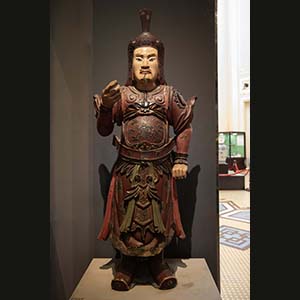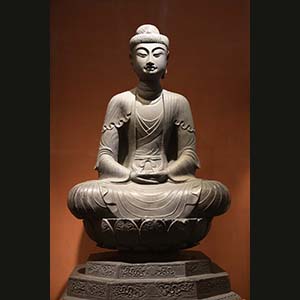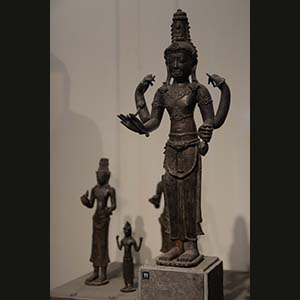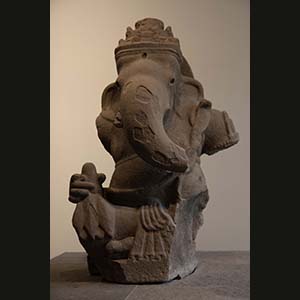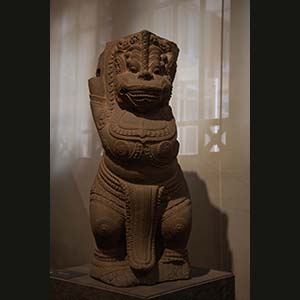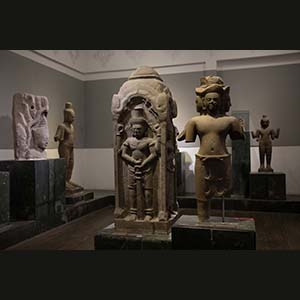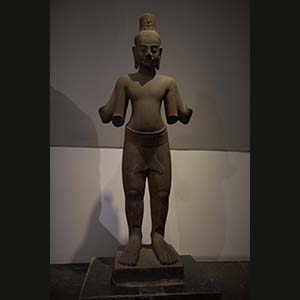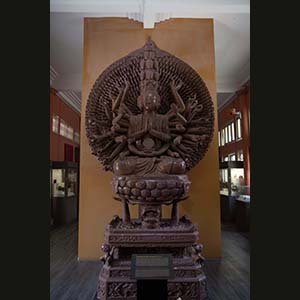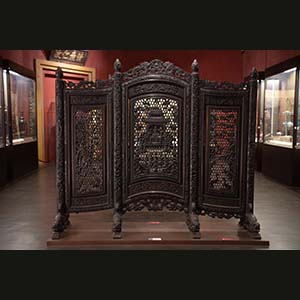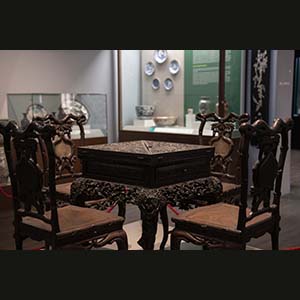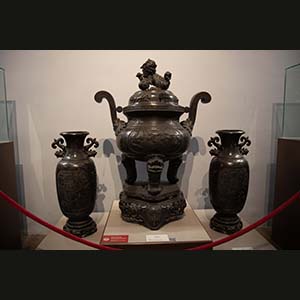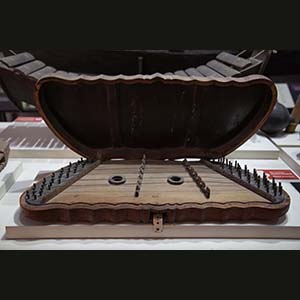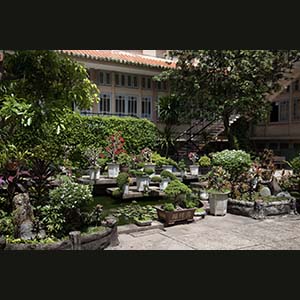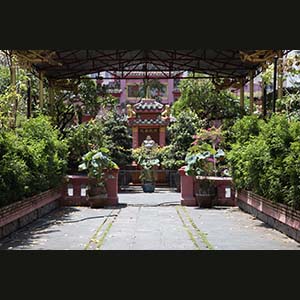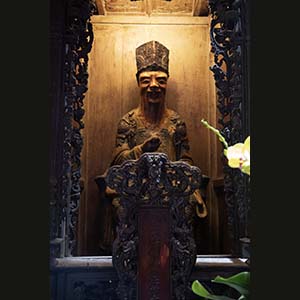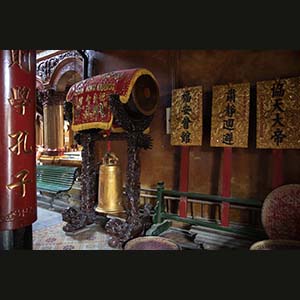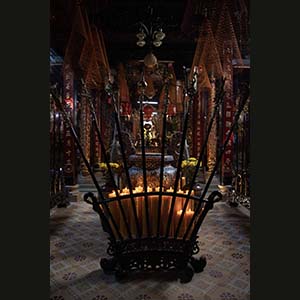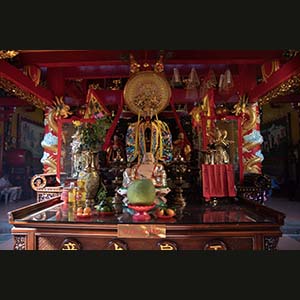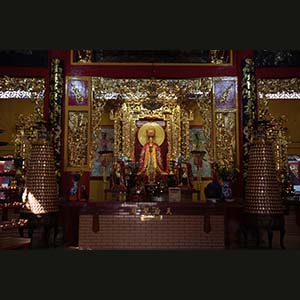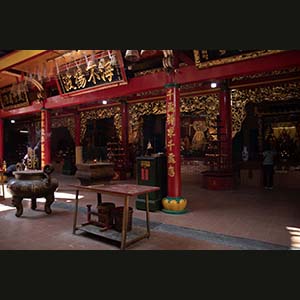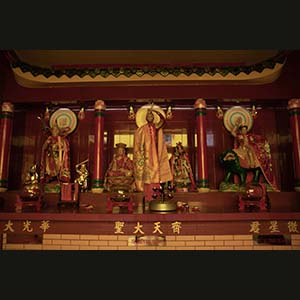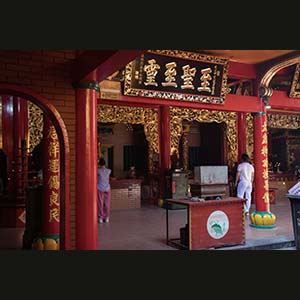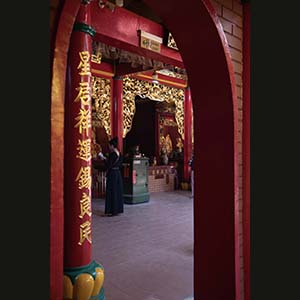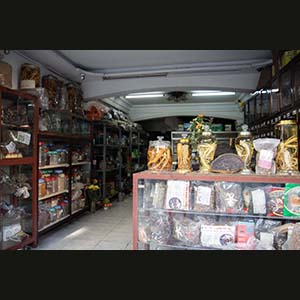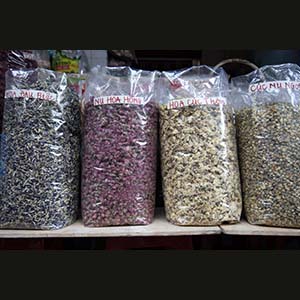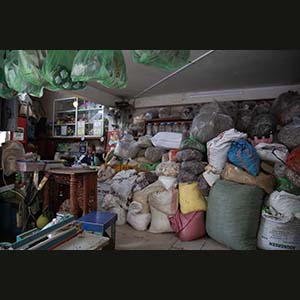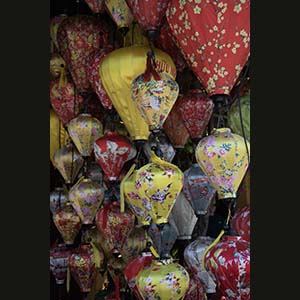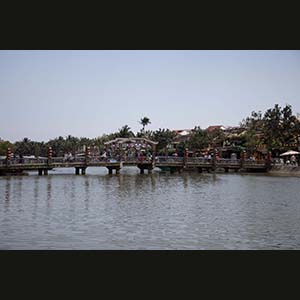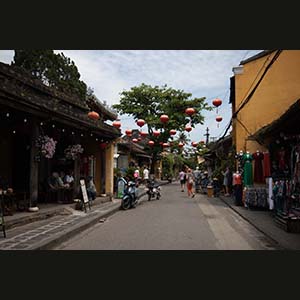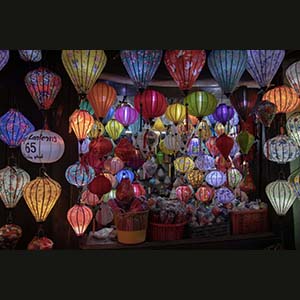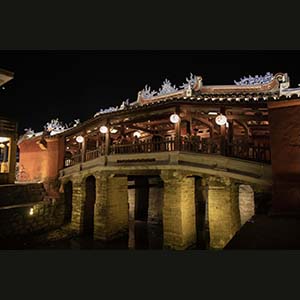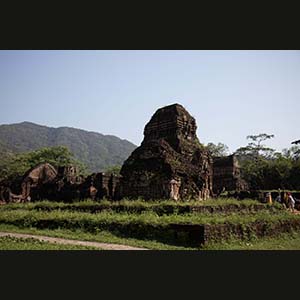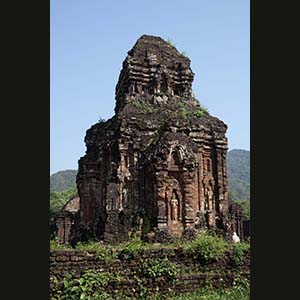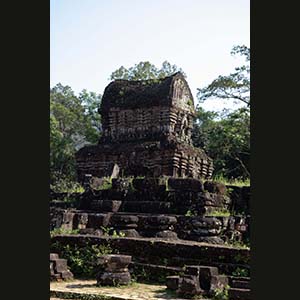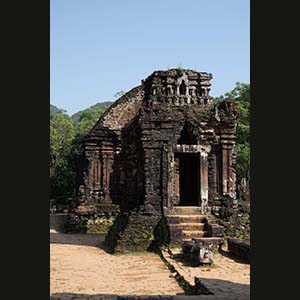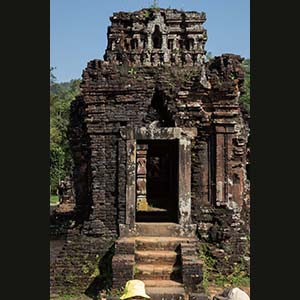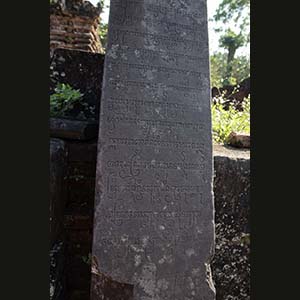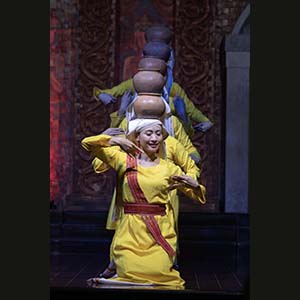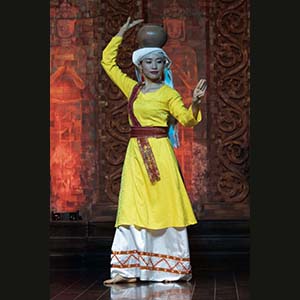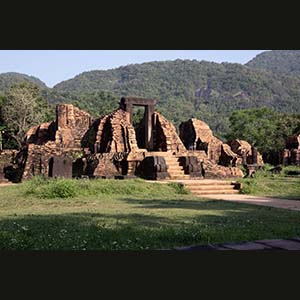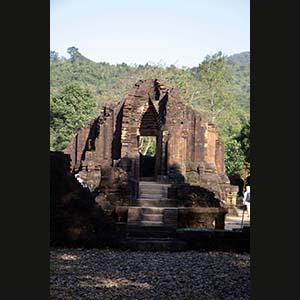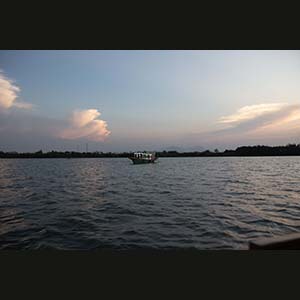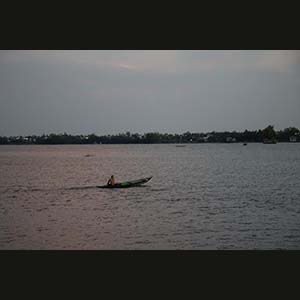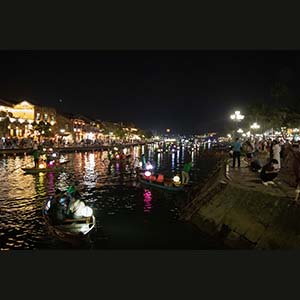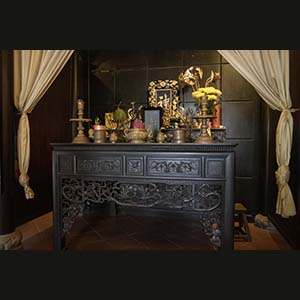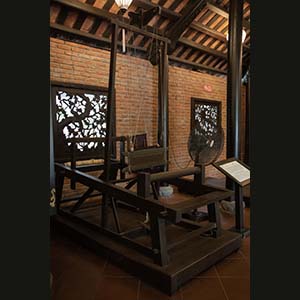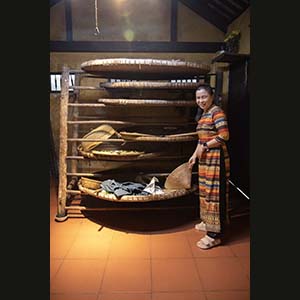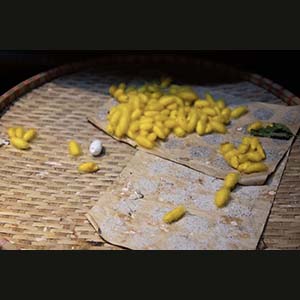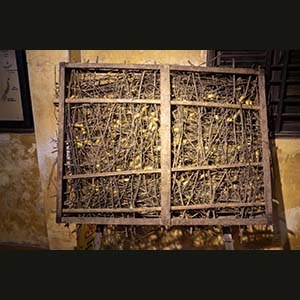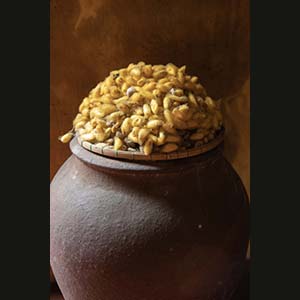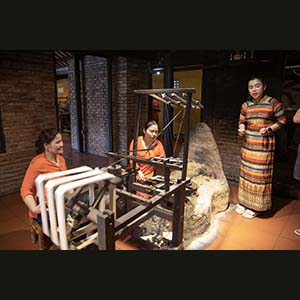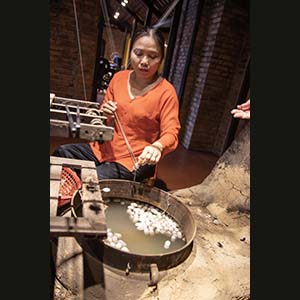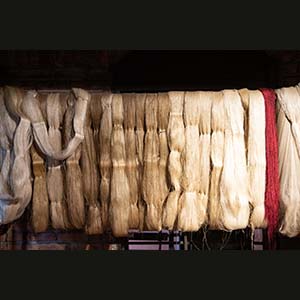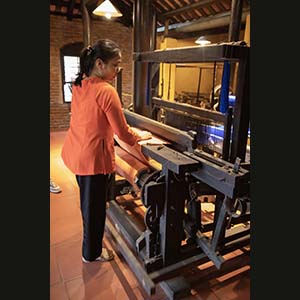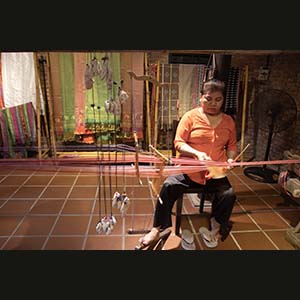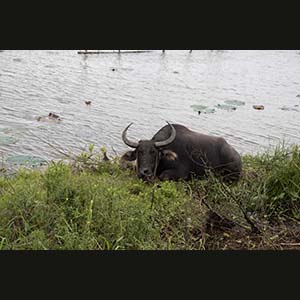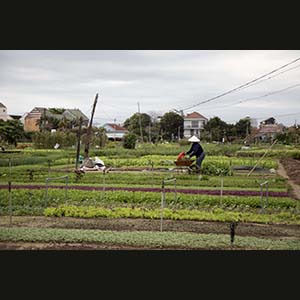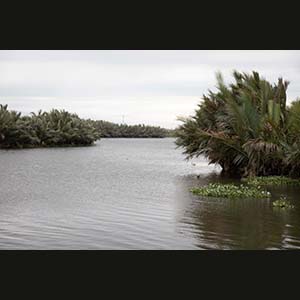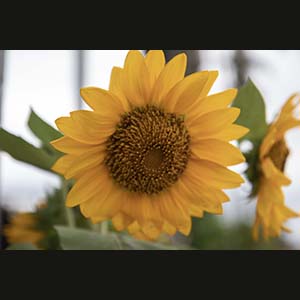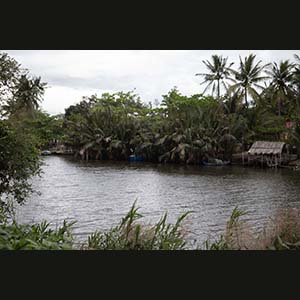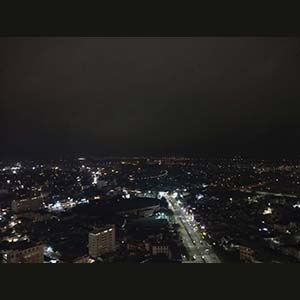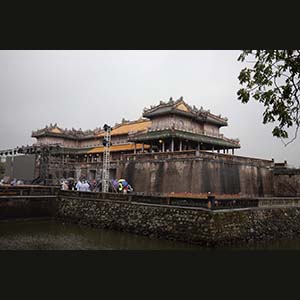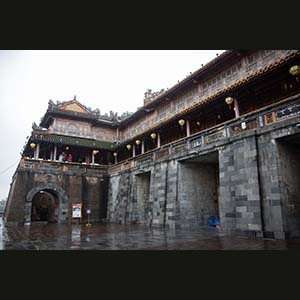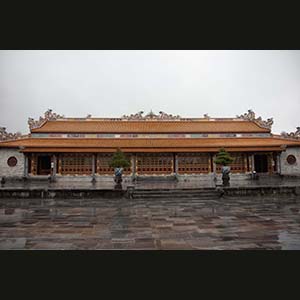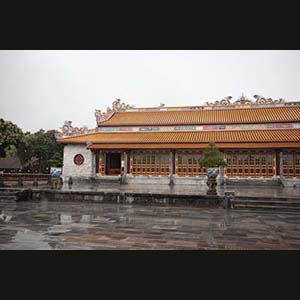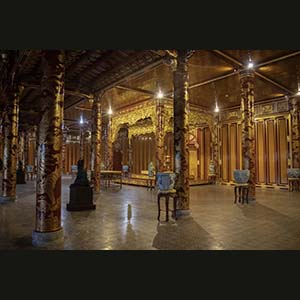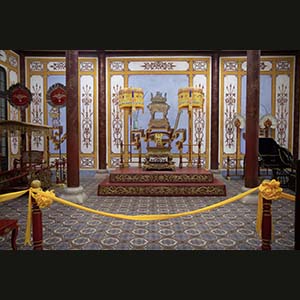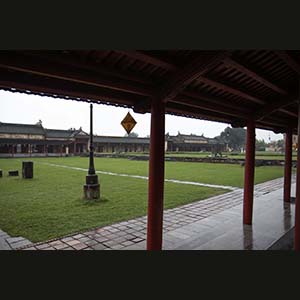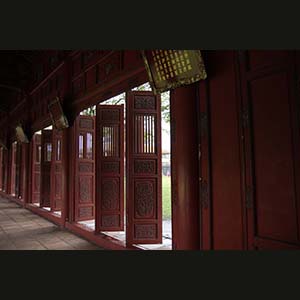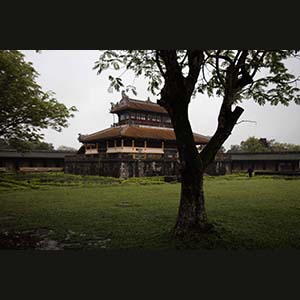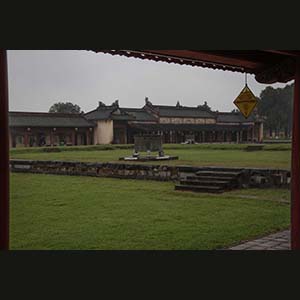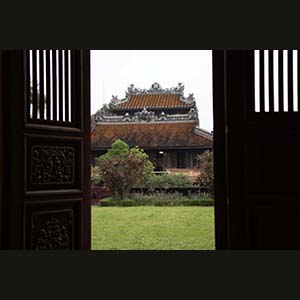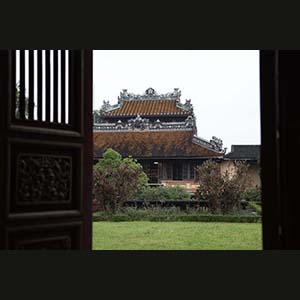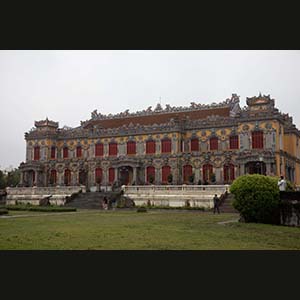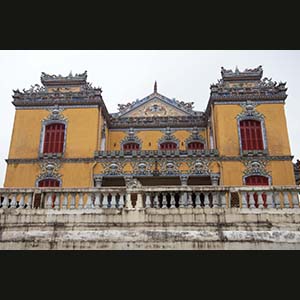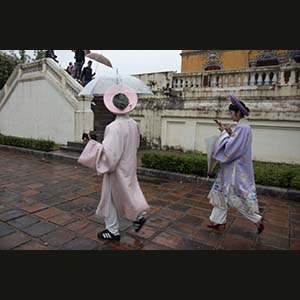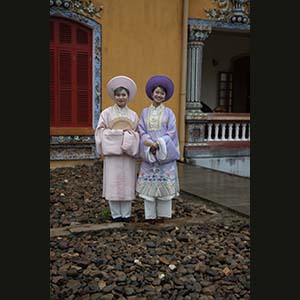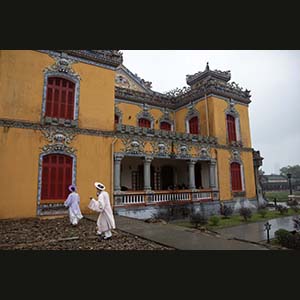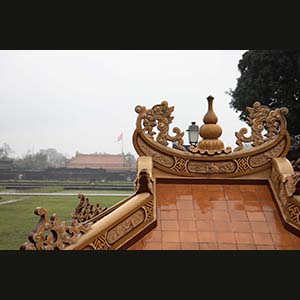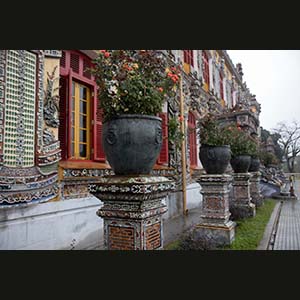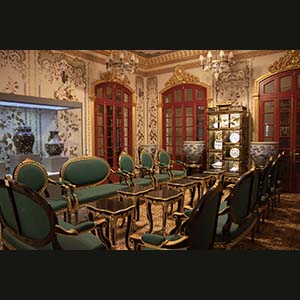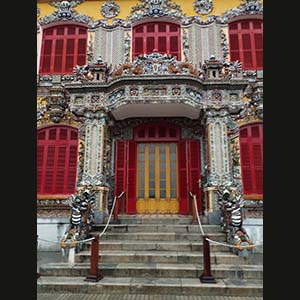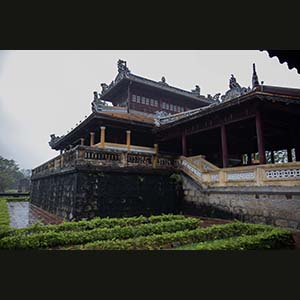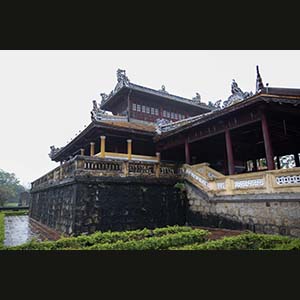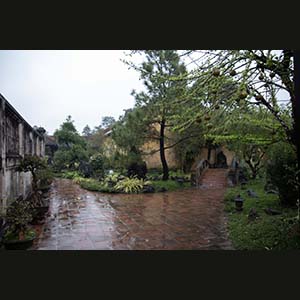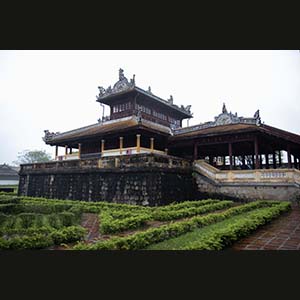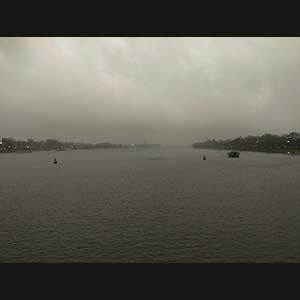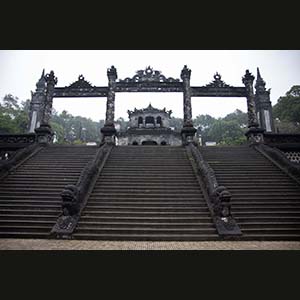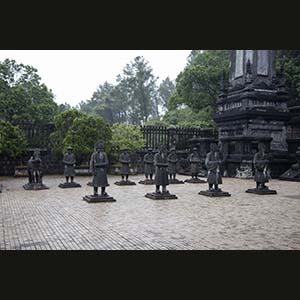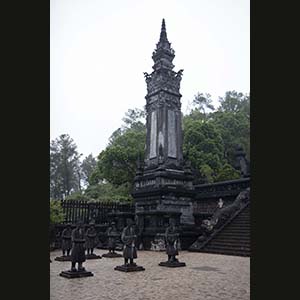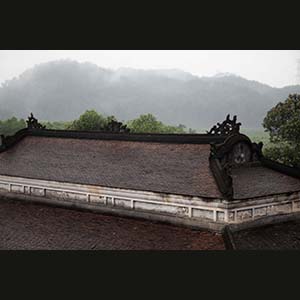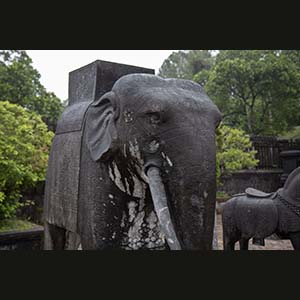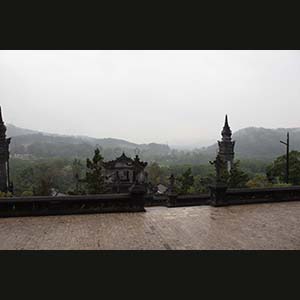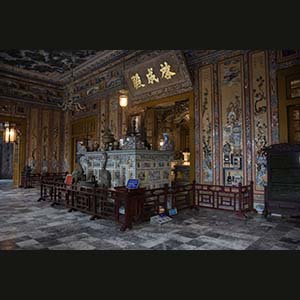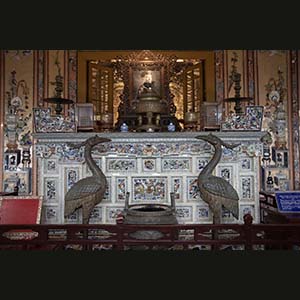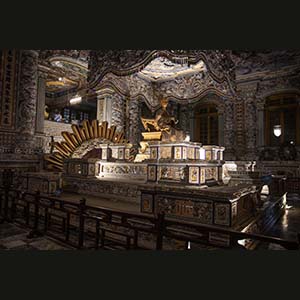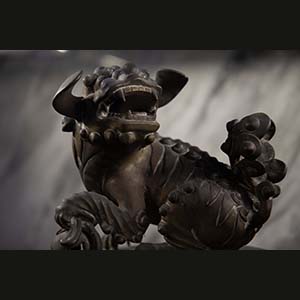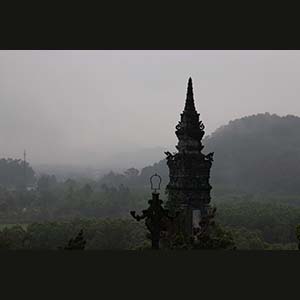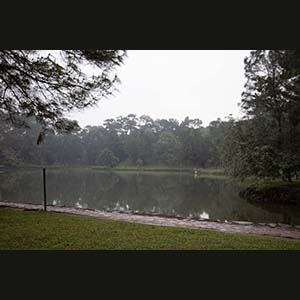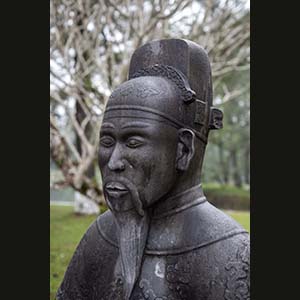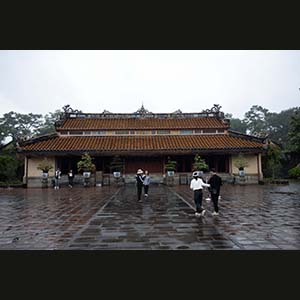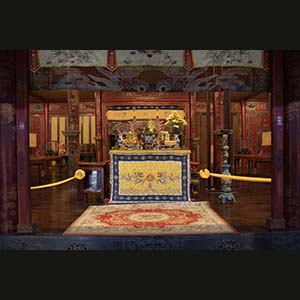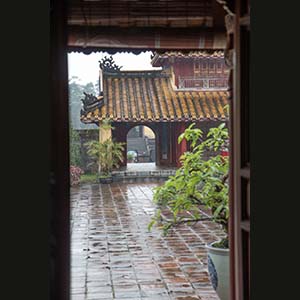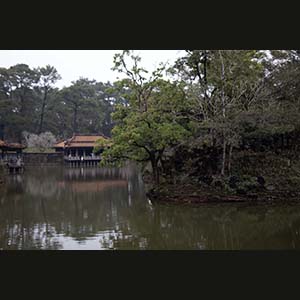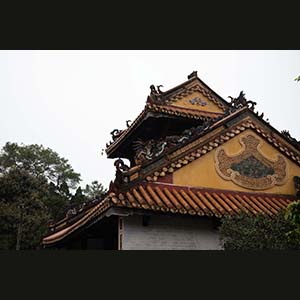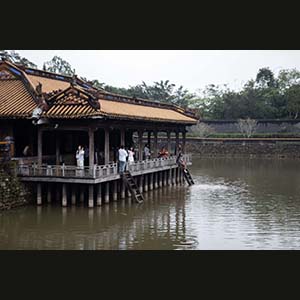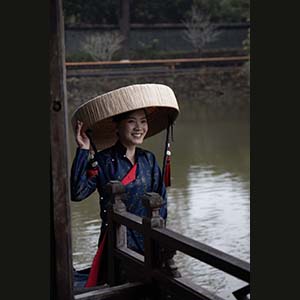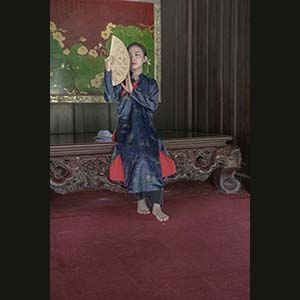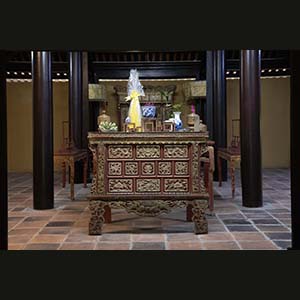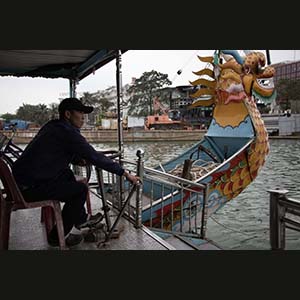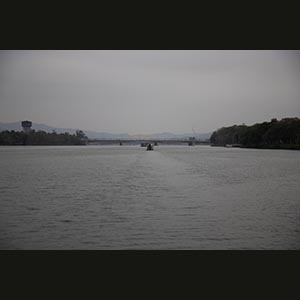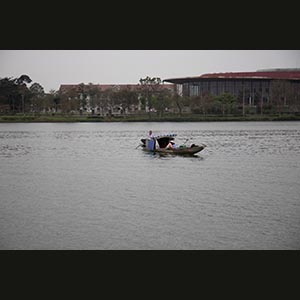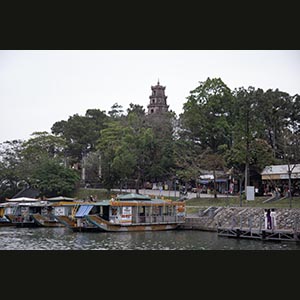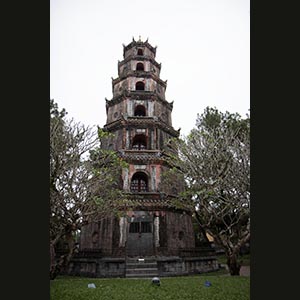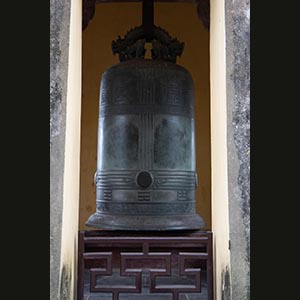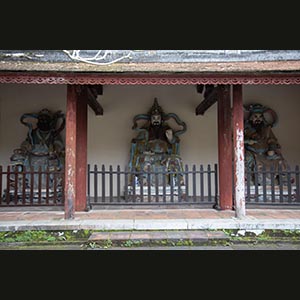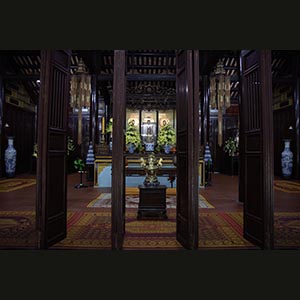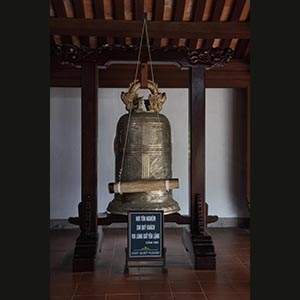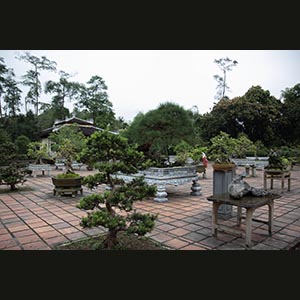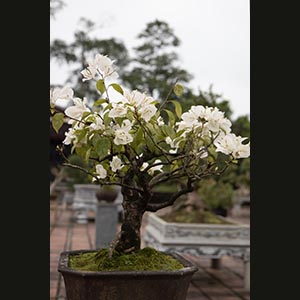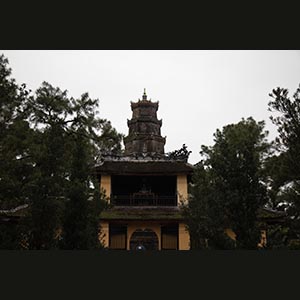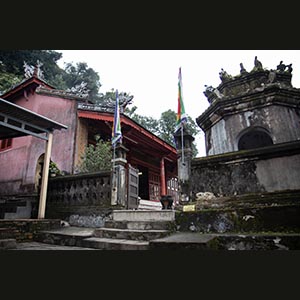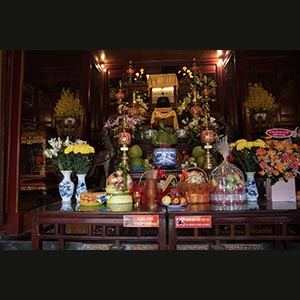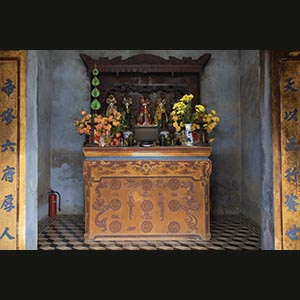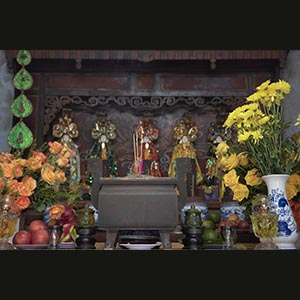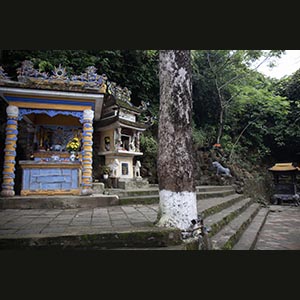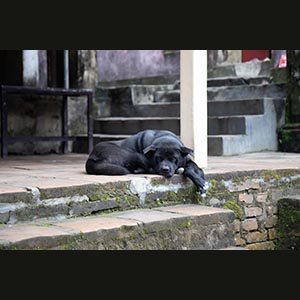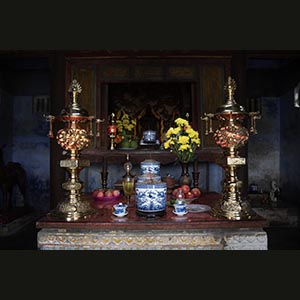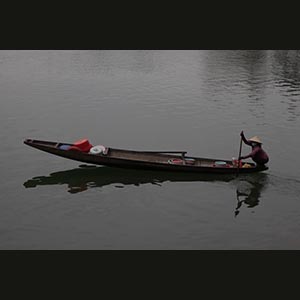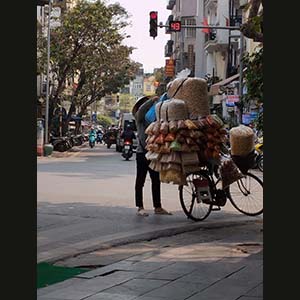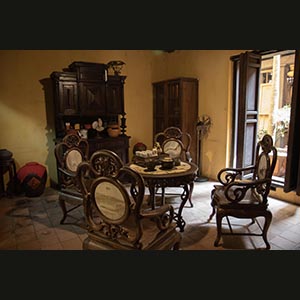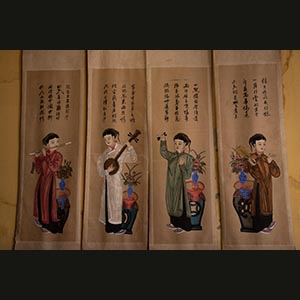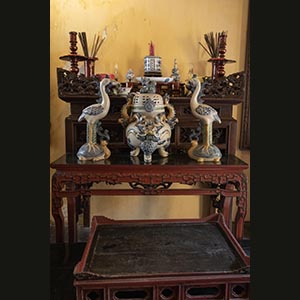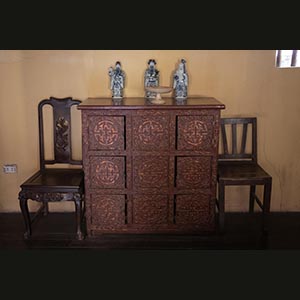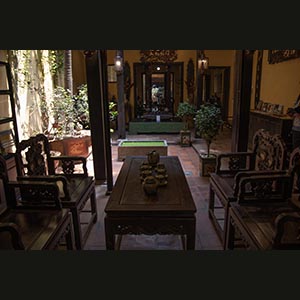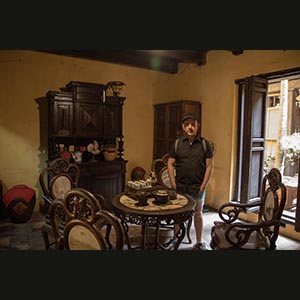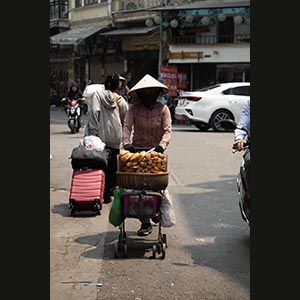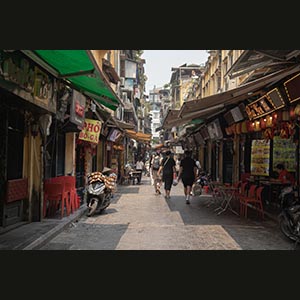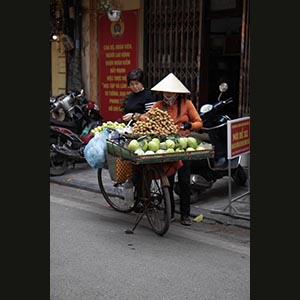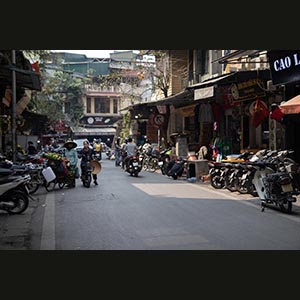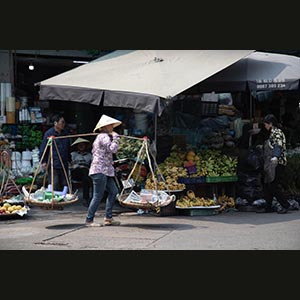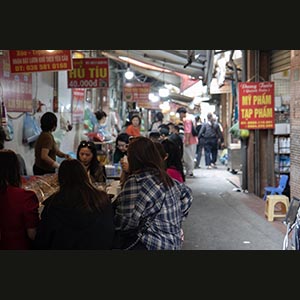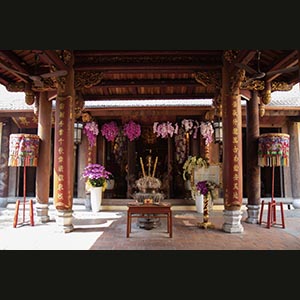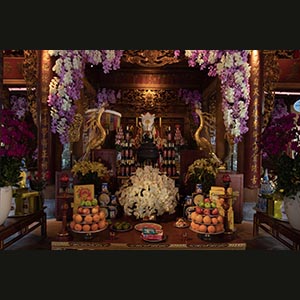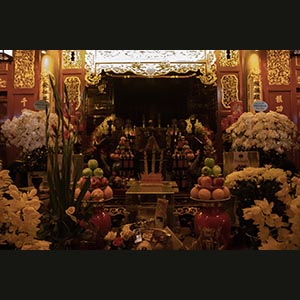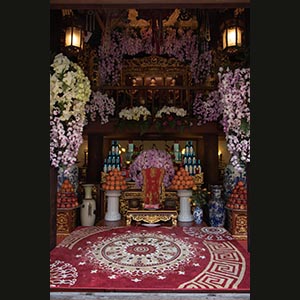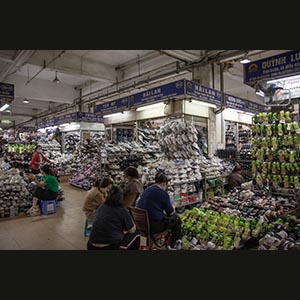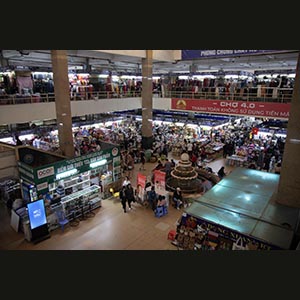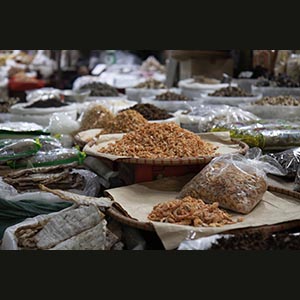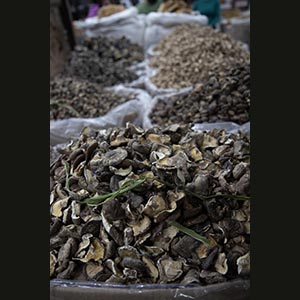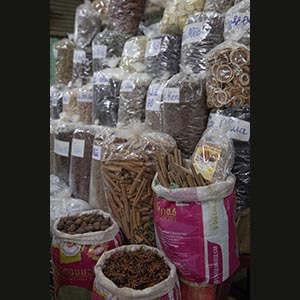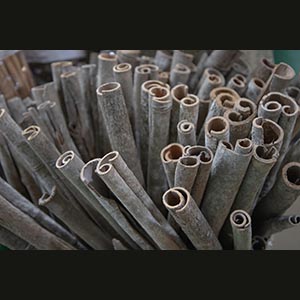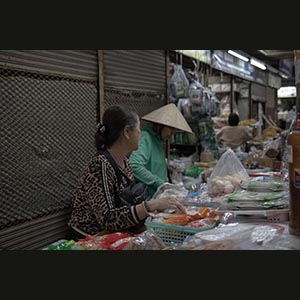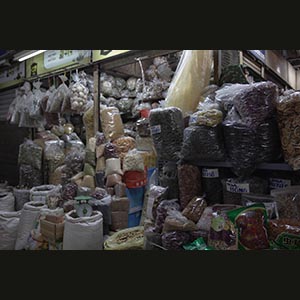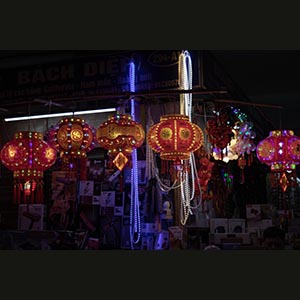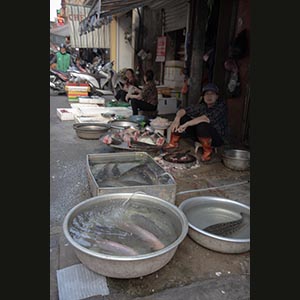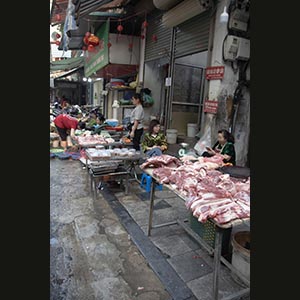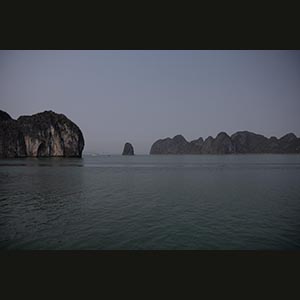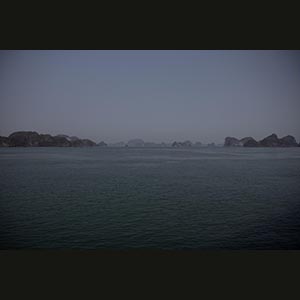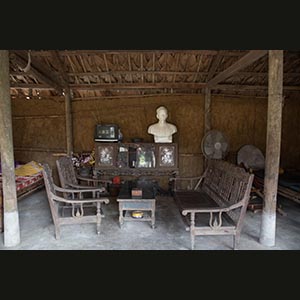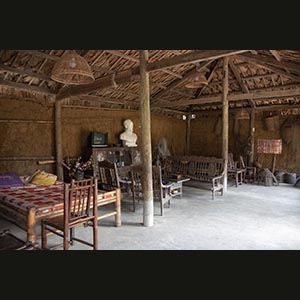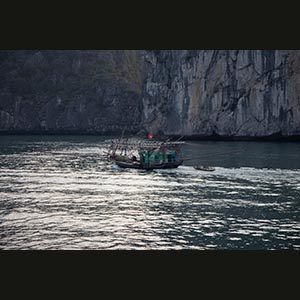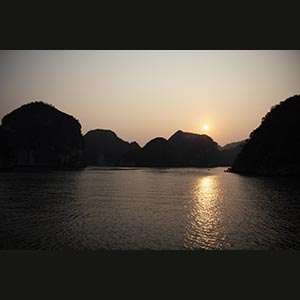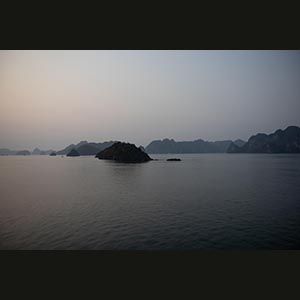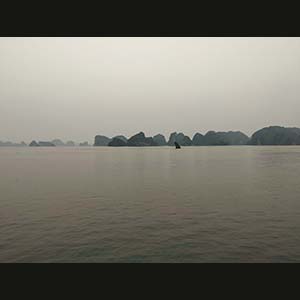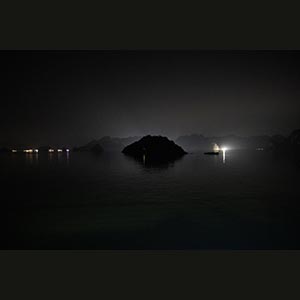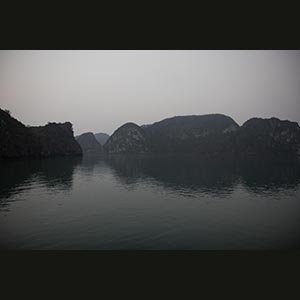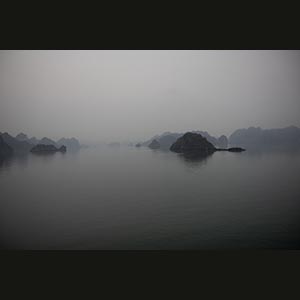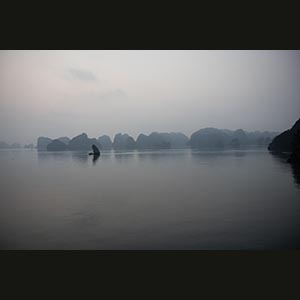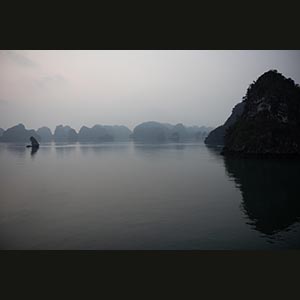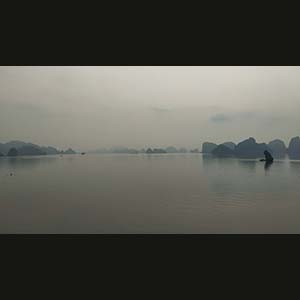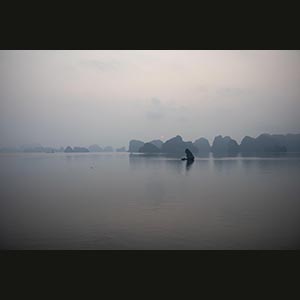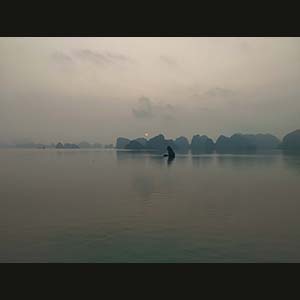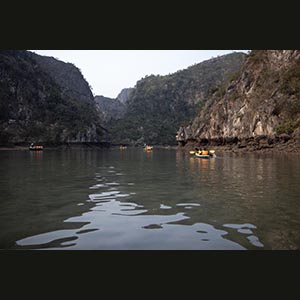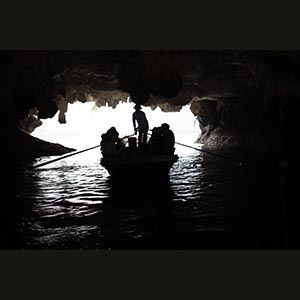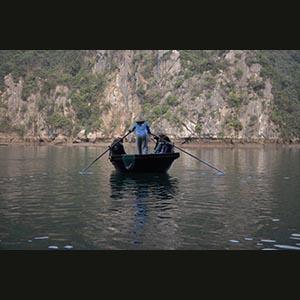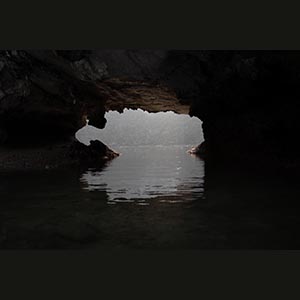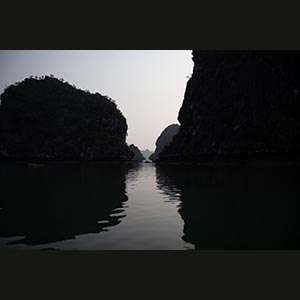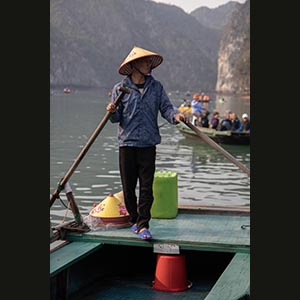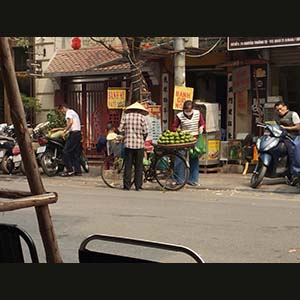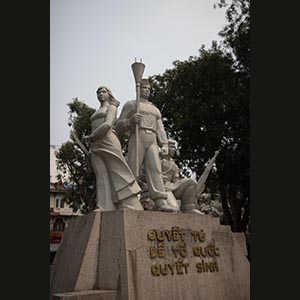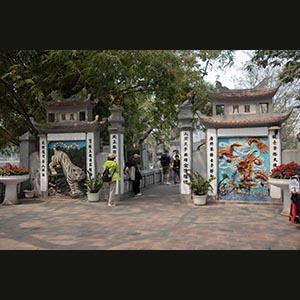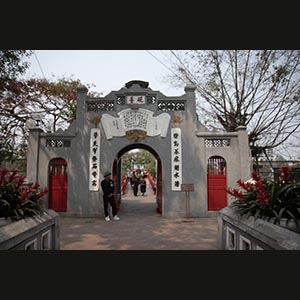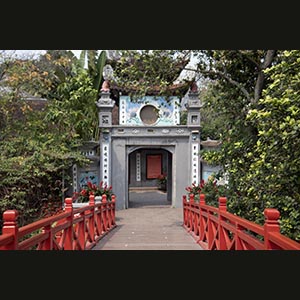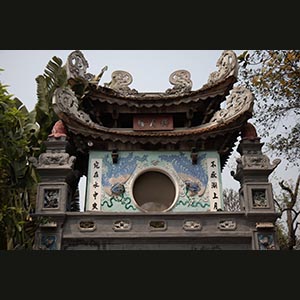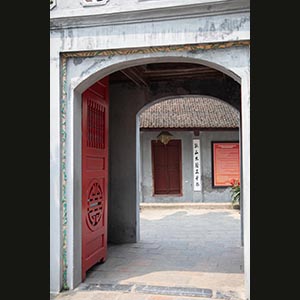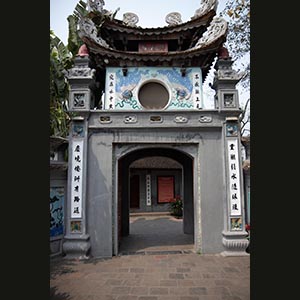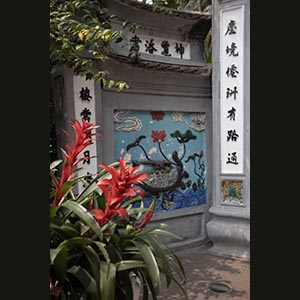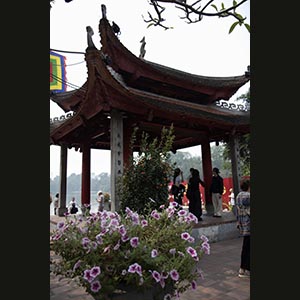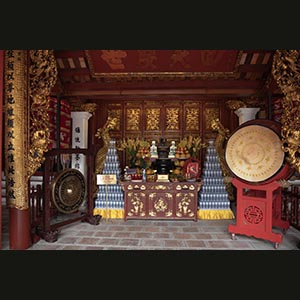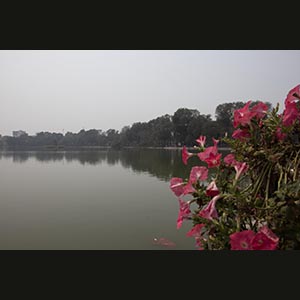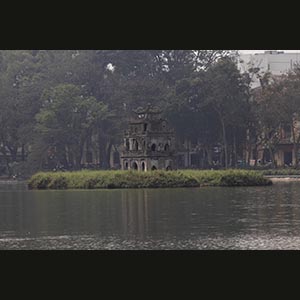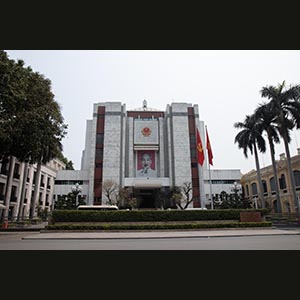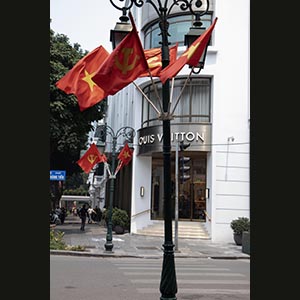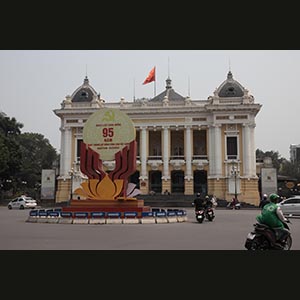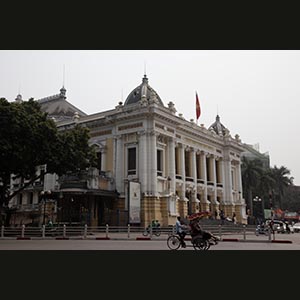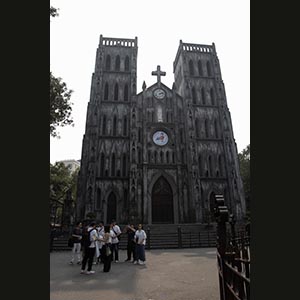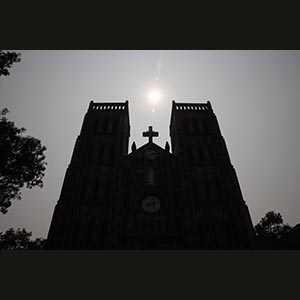Futuristic metropolises, temples, coffee with eggs, beer with ice, a hallucinatory traffic of scooters, dream beaches, war memories, and a kind and hospitable people.
Day 1 – Ho Chi Minh City
Seeing the world is beautiful, but sometimes you have to face a truly exhausting journey, sleeping on the plane, badly, and facing the time difference.
So on the first day we were definitely exhausted. Six hours flight to Doha, 3 at the airport, and another 7 to Ho Chi Minh City, the ancient Saigon, in the south of the country, from where we will start our journey.
Landed at 7 am, we hoped that there would be a bar or something similar in the airport, but instead nothing, so we settled for a stall just outside. Fortunately, the hotel did not make us wait long for the room, and after a shower we went out to see the center, or the Dong Khoi area.
Ho Chi Minh is a metropolis full of contrasts. Typically Asian neighborhoods of stalls and varied humanity, French colonial buildings and futuristic skyscrapers stand side by side.
So we came across the "street of books", Van Binh, only 100 meters away but with about twenty bookstores and stationery shops that are the joy of bibliophiles and photographers, craft stalls, a few cafes, and a good number of tourists.
Seeing the world is beautiful, but sometimes you have to face a truly exhausting journey, sleeping on the plane, badly, and facing the time difference.
So on the first day we were definitely exhausted. Six hours flight to Doha, 3 at the airport, and another 7 to Ho Chi Minh City, the ancient Saigon, in the south of the country, from where we will start our journey.
Landed at 7 am, we hoped that there would be a bar or something similar in the airport, but instead nothing, so we settled for a stall just outside. Fortunately, the hotel did not make us wait long for the room, and after a shower we went out to see the center, or the Dong Khoi area.
Ho Chi Minh is a metropolis full of contrasts. Typically Asian neighborhoods of stalls and varied humanity, French colonial buildings and futuristic skyscrapers stand side by side.
So we came across the "street of books", Van Binh, only 100 meters away but with about twenty bookstores and stationery shops that are the joy of bibliophiles and photographers, craft stalls, a few cafes, and a good number of tourists.
In the afternoon we visited the most modern part of HCMC, with designer shops, communist flags and futuristic skyscrapers.
The most emblematic is undoubtedly the "Bitexco financial tower": 262 meters, 68 floors, inaugurated in 2010, designed by Carlos Zapata, it is inspired by a lotus bud, symbol of Vietnam. From the "Skydeck" on the 49th floor you have a breathtaking view of the neighborhood, an ultra-modern skyline that looks like something out of a movie.
Eastern cities do not place major constraints on builders, who are generally free to destroy existing buildings and have no limits on square footage. The result is decidedly futuristic areas, difficult to find in Europe, where respect for the ancient and harmony prevails.
The most emblematic is undoubtedly the "Bitexco financial tower": 262 meters, 68 floors, inaugurated in 2010, designed by Carlos Zapata, it is inspired by a lotus bud, symbol of Vietnam. From the "Skydeck" on the 49th floor you have a breathtaking view of the neighborhood, an ultra-modern skyline that looks like something out of a movie.
Eastern cities do not place major constraints on builders, who are generally free to destroy existing buildings and have no limits on square footage. The result is decidedly futuristic areas, difficult to find in Europe, where respect for the ancient and harmony prevails.
Day 2 - Ho Chi Minh City
In Ho Chi Minh, in the War Remnants Museum, I was drawn to this badge from 1968. "Kill for Peace" immediately reminded me of the present day, the slogan "If you want peace, prepare for war", so dear to Von Der Leyen. 50 years have passed, but we have learned nothing.
The descriptive text of the badge says this:
"This badge was issued in 1968 in protest of President Lyndon B. Johnson's sending of U.S. troops to the Vietnamese battlefield.
The very name of the badge is a paradox, highlighting the contradiction in the idea that killing can lead to peace and denouncing the injustice of the Vietnam War.
The badge was inspired by a song of the same name by the group The Fugs.
Formed in the United States in 1964, the group was known for its satirical approach to
political and social issues through music.
Along with the song, the badge became a symbol of the peace movement in the United States during the 1960s and 1970s."
In Ho Chi Minh, in the War Remnants Museum, I was drawn to this badge from 1968. "Kill for Peace" immediately reminded me of the present day, the slogan "If you want peace, prepare for war", so dear to Von Der Leyen. 50 years have passed, but we have learned nothing.
The descriptive text of the badge says this:
"This badge was issued in 1968 in protest of President Lyndon B. Johnson's sending of U.S. troops to the Vietnamese battlefield.
The very name of the badge is a paradox, highlighting the contradiction in the idea that killing can lead to peace and denouncing the injustice of the Vietnam War.
The badge was inspired by a song of the same name by the group The Fugs.
Formed in the United States in 1964, the group was known for its satirical approach to
political and social issues through music.
Along with the song, the badge became a symbol of the peace movement in the United States during the 1960s and 1970s."
We visited the "Reunification Palace", seat of the South Vietnamese Government until the unification of the country in 1975, 60s architecture, a bit kitsch, a bit James Bond movie, interesting above all for what it represents.
Very touching, however, is the "Museum of war remnants", dedicated to the war between the North and South of the country. Nothing that is not already known, but the photos have an impact. Also beautiful is the selection of photographs by war reporters, many already seen in documentaries and television reports.
Thus we pass with ease from soldiers cheerfully intent on torturing a prisoner to others who display the shreds of a corpse like a trophy, between fleeing children burned by napalm (including the famous naked girl who runs burned) and testimonies of the effects of the "orange agent", even after several generations. Images that undoubtedly have an impact and which, moreover, call to mind other massacres of our days.
"Kill for peace" was the slogan of the interventionists, both then and now; to make peace he prepares for war...
Very touching, however, is the "Museum of war remnants", dedicated to the war between the North and South of the country. Nothing that is not already known, but the photos have an impact. Also beautiful is the selection of photographs by war reporters, many already seen in documentaries and television reports.
Thus we pass with ease from soldiers cheerfully intent on torturing a prisoner to others who display the shreds of a corpse like a trophy, between fleeing children burned by napalm (including the famous naked girl who runs burned) and testimonies of the effects of the "orange agent", even after several generations. Images that undoubtedly have an impact and which, moreover, call to mind other massacres of our days.
"Kill for peace" was the slogan of the interventionists, both then and now; to make peace he prepares for war...
The rest of the afternoon we wandered among pagodas and Buddhist temples, always very fascinating, full of colors and statues, and then slipped into the Ben Thanh market, inaugurated by the French in 1914.
It is the largest market in the city, with heaps of all kinds of goods offered by 1,500 stalls, on an area of 13,000 m2. Over the years it has become very touristy, but despite this the quality remains high.
Life is very cheap: in the last two evenings we had dinner in Michelin restaurants spending 25-30 € for two!
It is the largest market in the city, with heaps of all kinds of goods offered by 1,500 stalls, on an area of 13,000 m2. Over the years it has become very touristy, but despite this the quality remains high.
Life is very cheap: in the last two evenings we had dinner in Michelin restaurants spending 25-30 € for two!
Day 3 – Ho Chi Minh City
The impression of Ho Chi Minh is of a complicated city: sultry heat, a lot of traffic always and everywhere, pollution.
In the morning we visited the Chinese quarter, Cholon.
We took a tour in the company of a French photographer who has lived in Vietnam for thirty years; very interesting because it focuses on street photography. It was equally interesting to observe the people busy in the markets, in the shops, in the temples.... Stopping you have the opportunity to see life go by: a bride intent on being photographed in the temple, the elderly who tell each other outside the door, sellers intent on preparing their goods ...
The impression of Ho Chi Minh is of a complicated city: sultry heat, a lot of traffic always and everywhere, pollution.
In the morning we visited the Chinese quarter, Cholon.
We took a tour in the company of a French photographer who has lived in Vietnam for thirty years; very interesting because it focuses on street photography. It was equally interesting to observe the people busy in the markets, in the shops, in the temples.... Stopping you have the opportunity to see life go by: a bride intent on being photographed in the temple, the elderly who tell each other outside the door, sellers intent on preparing their goods ...
The Vietnamese allow themselves to be photographed without problems: they are almost long in it, and they remain very natural, continuing in their activities as if nothing had happened, whether in the street, as in the temples, or even sitting in front of the door.
The places of worship offer the most interesting ideas: the atmosphere is more intimate, and people absorbed in their prayers or in the various collateral activities, such as the preparation of incense sticks that are burned by the dozens in front of the altars, impregnating the air with mysticism.
The places of worship offer the most interesting ideas: the atmosphere is more intimate, and people absorbed in their prayers or in the various collateral activities, such as the preparation of incense sticks that are burned by the dozens in front of the altars, impregnating the air with mysticism.
On the streets, everything is sold: the sidewalks are mainly occupied by parked mopeds, they are used by shopkeepers as a space to display their goods, or they are occupied by stalls ranging from clothing to catering.
There are carts full of all kinds of goods, scooters carrying impressive loads, people enjoying a coffee or tasting the juice of a coconut, and even the sale of live animals. There is a whole world on the streets of Vietnam.
In the afternoon we walked around on our own, even if here everything closes at 17:30 and people have dinner very early.
There are carts full of all kinds of goods, scooters carrying impressive loads, people enjoying a coffee or tasting the juice of a coconut, and even the sale of live animals. There is a whole world on the streets of Vietnam.
In the afternoon we walked around on our own, even if here everything closes at 17:30 and people have dinner very early.
Day 4 – Ho Chi Minh City
We stayed at the History museum. Opened in 1929, it illustrates the evolution of Vietnamese cultures over the centuries through a series of artifacts.
There are artifacts from Angkor Wat in Cambodia and various Buddhist statues, up to sculptures of the Champa culture, a kingdom of Indian origin that reigned in the south of the country.
Also interesting are the influences of French culture during the colonial period, with the arrival of Rococo and European ceramics while, in the same period, we were crazy about the oriental one.
We stayed at the History museum. Opened in 1929, it illustrates the evolution of Vietnamese cultures over the centuries through a series of artifacts.
There are artifacts from Angkor Wat in Cambodia and various Buddhist statues, up to sculptures of the Champa culture, a kingdom of Indian origin that reigned in the south of the country.
Also interesting are the influences of French culture during the colonial period, with the arrival of Rococo and European ceramics while, in the same period, we were crazy about the oriental one.
In the afternoon, we toured a series of Buddhist and Taoist temples, beautiful in their bright colors, in the numerous statues of gods and fantastic beings, the strong scent of incense, and the people who pass from one God to another bringing each one a prayer, incense and sometimes even fruit. A lot of religiosity, even on the part of young people.
The Jade Emperor Pagoda, built in 1909, is a Taoist temple that fascinated us tremendously.
In the evening, flight to Da Nang and from there taxi to Hoi An. A very simple B&B, but hospitable and quiet: we needed a bit of silence after the continuous noise of Ho Chi Minh City.
The Jade Emperor Pagoda, built in 1909, is a Taoist temple that fascinated us tremendously.
In the evening, flight to Da Nang and from there taxi to Hoi An. A very simple B&B, but hospitable and quiet: we needed a bit of silence after the continuous noise of Ho Chi Minh City.
Day 5 – Hoi An
Hoi An is a city whose historic center is a UNESCO World Heritage Site, having preserved itself intact compared to a few centuries ago, when it was one of the most important ports in the China Sea.
Despite the strong tourist presence, it remains fascinating with its streets illuminated by lanterns, and the canals with their reflections.
The Japanese covered bridge, built in the 50s of the 900s to connect the Japanese and Chinese districts, is remarkable.
The city is also famous for its tailors, so we went to have two shirts made.
In the afternoon we went to the beach, to relax a bit.
Hoi An is a city whose historic center is a UNESCO World Heritage Site, having preserved itself intact compared to a few centuries ago, when it was one of the most important ports in the China Sea.
Despite the strong tourist presence, it remains fascinating with its streets illuminated by lanterns, and the canals with their reflections.
The Japanese covered bridge, built in the 50s of the 900s to connect the Japanese and Chinese districts, is remarkable.
The city is also famous for its tailors, so we went to have two shirts made.
In the afternoon we went to the beach, to relax a bit.
Day 6 - Hoi An
We went to pick up the shirts, they stayed really good.
After lunch, we took an excursion to My Son, a religious site built during our Middle Ages by the Champa empire, coming from India, which brought Buddhism to these parts. It was then abandoned and forgotten, only to be rediscovered by the French, brought to light and restored, at least in part. Observing these ruins is fascinating, even if there is not much left.
The forest here is very lush, of an intense green; it is a pleasure to observe it.
We then returned to the village with a nice boat excursion at sunset, along the river.
We went to pick up the shirts, they stayed really good.
After lunch, we took an excursion to My Son, a religious site built during our Middle Ages by the Champa empire, coming from India, which brought Buddhism to these parts. It was then abandoned and forgotten, only to be rediscovered by the French, brought to light and restored, at least in part. Observing these ruins is fascinating, even if there is not much left.
The forest here is very lush, of an intense green; it is a pleasure to observe it.
We then returned to the village with a nice boat excursion at sunset, along the river.
Day 7 - Hoi An
We visited what they call the "silk museum". It offers a great explanation about the art of sericulture. Silkworms are seen, which are raised on the basis of foliage. At some point their metamorphosis into a butterfly begins, and then they weave a cocoon that completely envelops them to protect them. It is a single filament several meters long: silk, in fact.
The cocoons are then boiled, in order to kill the larva without ruining the filament, which would happen if it were broken with a knife. Finally, all that remains is to remove the cocoon forming long skeins of silk, which are then dyed and woven.
As proof of its animal origin, and therefore protein, silk when exposed to fire has an odor very similar to burnt leather, unlike cotton which has a smell similar to paper.
In the afternoon we went to Tra Que, a village of farmers and fishermen in the river delta. Nice and relaxing, even if it is a dispersed set of modern houses.
In fact, Hoi An is unique precisely because it is a country that has maintained its historic center, a rare occurrence in the East. Although it is very touristy, it represents the only ancient city that we have ever been able to visit.
We visited what they call the "silk museum". It offers a great explanation about the art of sericulture. Silkworms are seen, which are raised on the basis of foliage. At some point their metamorphosis into a butterfly begins, and then they weave a cocoon that completely envelops them to protect them. It is a single filament several meters long: silk, in fact.
The cocoons are then boiled, in order to kill the larva without ruining the filament, which would happen if it were broken with a knife. Finally, all that remains is to remove the cocoon forming long skeins of silk, which are then dyed and woven.
As proof of its animal origin, and therefore protein, silk when exposed to fire has an odor very similar to burnt leather, unlike cotton which has a smell similar to paper.
In the afternoon we went to Tra Que, a village of farmers and fishermen in the river delta. Nice and relaxing, even if it is a dispersed set of modern houses.
In fact, Hoi An is unique precisely because it is a country that has maintained its historic center, a rare occurrence in the East. Although it is very touristy, it represents the only ancient city that we have ever been able to visit.
Day 8 - Train journey between Hoi An and Hue.
This route is spoken of as one of the most evocative in the world, and in fact it does not disappoint.
The first part, especially, when it runs along the side of mountains that descend steeply towards the ocean. There is no building for miles; only the tropical forest that, from the peaks to the waves, covers everything with a mantle so thick that it does not allow a glimpse of a piece of land. The vegetation is the real queen: very green and luxuriant, it really covers every surface, except for the vertical rock walls.
The only human presences are small service stations that are used to make trains traveling in opposite directions cross on the single track. Without a road, they are inhabited only by service personnel and families.
So the narrow-gauge line continues in the middle of this landscape, then descends through rice paddies and finally reaches Hue.
If in Hoi An we stayed in a small b&b, with breakfast included and a towel each for 4 days to be used for everything, here we are in a 5-star hotel, room on the 32nd floor, three restaurants, spa, swimming pool and I don't know what else.
Compared to Ho Chi Minh the temperature has dropped a lot, here it reaches just over 20 ° and everything is overcast. Better this way, in any case.
This route is spoken of as one of the most evocative in the world, and in fact it does not disappoint.
The first part, especially, when it runs along the side of mountains that descend steeply towards the ocean. There is no building for miles; only the tropical forest that, from the peaks to the waves, covers everything with a mantle so thick that it does not allow a glimpse of a piece of land. The vegetation is the real queen: very green and luxuriant, it really covers every surface, except for the vertical rock walls.
The only human presences are small service stations that are used to make trains traveling in opposite directions cross on the single track. Without a road, they are inhabited only by service personnel and families.
So the narrow-gauge line continues in the middle of this landscape, then descends through rice paddies and finally reaches Hue.
If in Hoi An we stayed in a small b&b, with breakfast included and a towel each for 4 days to be used for everything, here we are in a 5-star hotel, room on the 32nd floor, three restaurants, spa, swimming pool and I don't know what else.
Compared to Ho Chi Minh the temperature has dropped a lot, here it reaches just over 20 ° and everything is overcast. Better this way, in any case.
Day 9 - Hue
The imperial city of Hue was the capital of Vietnam between 1802 and 1945, during the French protectorate over Indochina.
It consisted of a collection of pavilions spread over a large area surrounded by walls and a moat, and the emperor and his closest collaborators worked on it.
It was practically destroyed by bombing during the war. Partly restored or rather rebuilt, today it still gives an idea of the original splendor, such as the throne room.
The imperial city of Hue was the capital of Vietnam between 1802 and 1945, during the French protectorate over Indochina.
It consisted of a collection of pavilions spread over a large area surrounded by walls and a moat, and the emperor and his closest collaborators worked on it.
It was practically destroyed by bombing during the war. Partly restored or rather rebuilt, today it still gives an idea of the original splendor, such as the throne room.
The wooden structures are impressive, real porticoes that connected the most important buildings, simple and refined at the same time.
There are also curious buildings, such as a truly surprising Vietnamese Rococo style building.
Strangely, we didn't meet many tourists. The citadel was visited very calmly, and even around the city there were few fashionable restaurants, with mainly local customers.
The weather did not help much: it rained all day long, sometimes more, sometimes less but always, with a leaden and low sky. Very fascinating for the photos and for the atmosphere, less for the logistics.
In the morning we then took the opportunity for a massage session at the hotel, enjoying a bit of relaxation.
Strangely, we didn't meet many tourists. The citadel was visited very calmly, and even around the city there were few fashionable restaurants, with mainly local customers.
The weather did not help much: it rained all day long, sometimes more, sometimes less but always, with a leaden and low sky. Very fascinating for the photos and for the atmosphere, less for the logistics.
In the morning we then took the opportunity for a massage session at the hotel, enjoying a bit of relaxation.
We took the opportunity to steal some photos of some girls, dressed in typical costumes who were posing for friends in the most iconic places.
From what we have seen, it is no problem for the Vietnamese to be photographed by strangers. Often, then, the photo is shown and commented on with a smile.
From what we have seen, it is no problem for the Vietnamese to be photographed by strangers. Often, then, the photo is shown and commented on with a smile.
Day 10 - Hue
It didn't rain much anymore. Gray sky, low clouds, very high humidity, but no water.
We visited the Imperial Tombs, a series of mausoleums built west of Hue for importers of the last dynasty that reigned over Vietnam during the French protectorate, the Nguyen
They are all conceived on the Chinese and Japanese model, with some concessions to our baroque. Each of them consists of a series of buildings (temples, tombs...) inserted in a wooded landscape, where lakes, hills and woods have been artfully built to dialogue with the buildings and create something more than a simple outline: nature and architecture are two elements of the same project.
The result is truly perfect landscapes, where it is a pleasure to walk. The leaden weather also added to the atmosphere, as in a Miyazaki anime, with faded stone warriors guarding the dead, and moss-covered towers hidden in the hills.
Khai Dinh's tomb features French Gothic elements, a testament to his interest in European culture and acceptance of French colonial rule.
It didn't rain much anymore. Gray sky, low clouds, very high humidity, but no water.
We visited the Imperial Tombs, a series of mausoleums built west of Hue for importers of the last dynasty that reigned over Vietnam during the French protectorate, the Nguyen
They are all conceived on the Chinese and Japanese model, with some concessions to our baroque. Each of them consists of a series of buildings (temples, tombs...) inserted in a wooded landscape, where lakes, hills and woods have been artfully built to dialogue with the buildings and create something more than a simple outline: nature and architecture are two elements of the same project.
The result is truly perfect landscapes, where it is a pleasure to walk. The leaden weather also added to the atmosphere, as in a Miyazaki anime, with faded stone warriors guarding the dead, and moss-covered towers hidden in the hills.
Khai Dinh's tomb features French Gothic elements, a testament to his interest in European culture and acceptance of French colonial rule.
The room with its mausoleum is a surprising mixture of rococo and oriental styles, which despite expectations manage to blend harmoniously. If in Europe, in royal palaces, it was fashionable to adorn the rooms with exotic elements inspired by the East, here the opposite happens: it is the European Baroque decorations that are reworked in a Vietnamese context
Minh Mang's traditionalism, on the other hand, is fully reflected in his tomb in classical Chinese style, with perfectly symmetrical proportions, in stark contrast to that of Khai Dinh. It is set in a beautiful park.
Here too there were plenty of people dressed traditionally, visiting on their own, and it was easy to take some nice photos of them.
Day 11 - Hue
We took a boat trip on the Perfume River, which runs through the Hue region.
On the first journey there were four of us and on the second it is the two of us.
We visited two temples overlooking the river, going up the course into the first hills. A sacred river, it is overlooked by temples, pagodas, tombs and even Catholic churches.
The temples are always fascinating, imbued with mysticism. The first stop was at the Thien Mu pagoda, commissioned by Emperor Nguyen Hoang in honor of a woman who had predicted the arrival of a man who would erect a Buddhist monastery in that very place; which actually happened.
Thich Nhat Hanh, a Buddhist monk and peace activist, father of "mindfulness" and a world-famous figure, also lived here.
We took a boat trip on the Perfume River, which runs through the Hue region.
On the first journey there were four of us and on the second it is the two of us.
We visited two temples overlooking the river, going up the course into the first hills. A sacred river, it is overlooked by temples, pagodas, tombs and even Catholic churches.
The temples are always fascinating, imbued with mysticism. The first stop was at the Thien Mu pagoda, commissioned by Emperor Nguyen Hoang in honor of a woman who had predicted the arrival of a man who would erect a Buddhist monastery in that very place; which actually happened.
Thich Nhat Hanh, a Buddhist monk and peace activist, father of "mindfulness" and a world-famous figure, also lived here.
The temple of Hon Chen is very secluded and not very frequented; Lying on the side of a hill facing the river, it is a corner of tranquility, the scent of incense and an infinity of altars, niches and statues that populate every nook and cranny. The river of Perfumes, now free from the city, offers quiet and relaxing landscapes.
Day 12 - Hanoi
Hanoi's Old Quarter is really beautiful. It doesn't have many ancient buildings, but it's a maze of streets full of everything: stalls selling everything from live fish to souvenirs, travel agencies, elegant restaurants and street food, scooters as if it were raining, people busy with the most diverse activities, tourists looking for the perfect photo.
It is a neighborhood that has opened up to tourism without losing its authenticity, a mix that is almost impossible to find today.
It is a pleasure to wander through its streets. And so the temples, the markets, the railway, the bridge, then bombed and rebuilt, become an excuse to enjoy its environment.
The shopkeepers are incredible, who with total normality display the price tag for the Vietnamese, but who have a different price for tourists.
And so a purse that costs €30 or more in Europe is sold for €10, but costs less than €1 to the natives. This gives an idea of how much we pay for things in the West.
Hanoi's Old Quarter is really beautiful. It doesn't have many ancient buildings, but it's a maze of streets full of everything: stalls selling everything from live fish to souvenirs, travel agencies, elegant restaurants and street food, scooters as if it were raining, people busy with the most diverse activities, tourists looking for the perfect photo.
It is a neighborhood that has opened up to tourism without losing its authenticity, a mix that is almost impossible to find today.
It is a pleasure to wander through its streets. And so the temples, the markets, the railway, the bridge, then bombed and rebuilt, become an excuse to enjoy its environment.
The shopkeepers are incredible, who with total normality display the price tag for the Vietnamese, but who have a different price for tourists.
And so a purse that costs €30 or more in Europe is sold for €10, but costs less than €1 to the natives. This gives an idea of how much we pay for things in the West.
We are always fascinated by meeting the locals, intent on their activities and dressed in traditional clothes
Day 13
Ha Long Bay and the neighboring Lan Ha Bay are undoubtedly the most spectacular site in Vietnam.
It is an archipelago of an infinite number of islets that penetrate the sea for miles and miles, all with the classic "dome" shape, steep and bristling with vegetation. They create an endless series of bays, inlets, perspectives, and shades of color.
Ha Long Bay and the neighboring Lan Ha Bay are undoubtedly the most spectacular site in Vietnam.
It is an archipelago of an infinite number of islets that penetrate the sea for miles and miles, all with the classic "dome" shape, steep and bristling with vegetation. They create an endless series of bays, inlets, perspectives, and shades of color.
They picked us up at the hotel in Hanoi early in the morning, and in a couple of hours we were on the coast.
To visit the area we participated in an "all inclusive" cruise. We are not thrilled, since we prefer to be able to manage our time and our days freely, but it was the best solution.
The view in any case makes up for everything.
To visit the area we participated in an "all inclusive" cruise. We are not thrilled, since we prefer to be able to manage our time and our days freely, but it was the best solution.
The view in any case makes up for everything.
Day 14 - Lan Ha Bay
This morning, spectacular sunrise in Lan Ha Bay.
All these stacks that surround the bay create a fairytale landscape, which the morning mist accentuates. It is truly one of the most beautiful landscapes we have ever seen.
After a boat excursion inside a cove, we returned to the coast, and then to Hanoi.
Since it was now afternoon and we were tired, we opted to have lunch at the hotel and then have a 90-minute massage, really regenerating. They are very good, they can really understand which muscles to insist on and how to activate them, they really leave you as good as new.
This morning, spectacular sunrise in Lan Ha Bay.
All these stacks that surround the bay create a fairytale landscape, which the morning mist accentuates. It is truly one of the most beautiful landscapes we have ever seen.
After a boat excursion inside a cove, we returned to the coast, and then to Hanoi.
Since it was now afternoon and we were tired, we opted to have lunch at the hotel and then have a 90-minute massage, really regenerating. They are very good, they can really understand which muscles to insist on and how to activate them, they really leave you as good as new.
Day 15 - Hanoi
Last day in Vietnam and last tours to Hanoi
Compared to Ho Chi Minh, Hanoi seemed more architecturally interesting, more alive.
Ngoc Son Temple is the most visited temple in Hanoi, its name means "Temple of the Jade Mountain". It is located on an islet of Hoan Kiem Lake, connected to the mainland by a beautiful wooden bridge. He is highly revered by the city's residents.
Last day in Vietnam and last tours to Hanoi
Compared to Ho Chi Minh, Hanoi seemed more architecturally interesting, more alive.
Ngoc Son Temple is the most visited temple in Hanoi, its name means "Temple of the Jade Mountain". It is located on an islet of Hoan Kiem Lake, connected to the mainland by a beautiful wooden bridge. He is highly revered by the city's residents.
In addition to the magnificent temples, the Catholic cathedral is also striking, although it is curious to see a Gothic-style church built in the nineteenth century in Vietnam. The colonial-era buildings, such as the Opera, are also suggestive.
The lake in the city center is pleasant, which in the evening comes alive with a lively crowd. And tomorrow, a day of travel...
We will keep the memory of Vietnam of its people, so friendly and welcoming, and of its chaotic but fascinating cities, full of life, in a continuous swarm of people, scooters and activities of all kinds.
The lake in the city center is pleasant, which in the evening comes alive with a lively crowd. And tomorrow, a day of travel...
We will keep the memory of Vietnam of its people, so friendly and welcoming, and of its chaotic but fascinating cities, full of life, in a continuous swarm of people, scooters and activities of all kinds.
